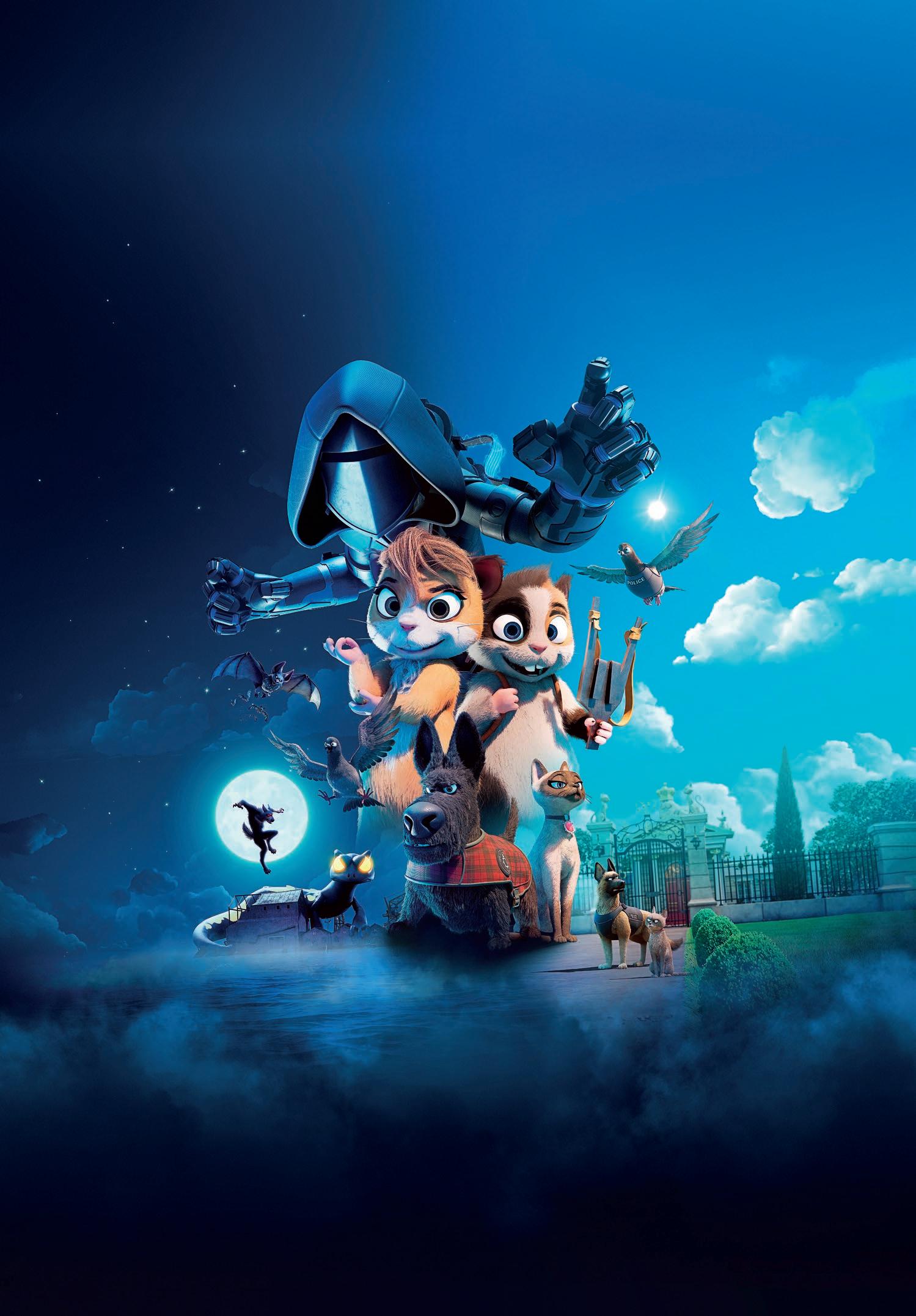


Strength in numbers
Toycos join forces in co-branded collabs
Thinking globally
Co-pro strategies get it done ...PLUS, the latest new funds!





















Toycos join forces in co-branded collabs
Thinking globally
Co-pro strategies get it done ...PLUS, the latest new funds!




















Nelly Jelly is based on the children’s hit book series from Lithuania. The brand has a successful licensing business, including 30 partners and is now moving international with a new comedy preschool series in collaboration with British creative studio “3Megos.”
At this year’s Annecy Festival, Nelly Jelly IP, participating together with “3Megos,” will be sharing the trailer, and script for the new animated series. In this series, Nelly Jelly is presented as an intelligent, determined, strong-willed 6-year-old girl with a huge imagination, who sometimes simply needs a little help from her monster friends.
“Nelly Jelly is a relatable and loveable character, and its concept is already proven to work. We are not starting from scratch here - we’re starting with an IP that has a track record of people liking the characters, and there is a distinct storyline and a plot,” comments Martin Lowde, co-founder and CEO of “3Megos.” “The parents will
also relate to the learning moments, and, in the end, the series will model good behavior. This is why we believe the series will be loved by kids and their parents around the world.”

Indeed, the world of Nelly Jelly is similar to the world of any child - she has real friends, pets, family, and real children’s problems. She’s good-hearted and optimistic, she’s also determined and smart, but when trouble hits, it creates a call into the monster world. And that’s when the magic happens - her monster friends sense when she’s in trouble and burst onto the scene.
Simona Krasauskienė, CEO of NJ World, the company that manages the Kakė Makė (native IP) and Nelly Jelly IPs, says that the new series offers a heartwarming, relatable story, with elements of music, fun, surprises, and comedy, making it great for family co-viewing.
Martin Lowde
“Our IP developing team, experienced and forward-thinking, is collaborating with Emmy and BAFTA Film award-winning animation studio “3Megos”: we have united to use our joint expertise in children’s preferences for entertainment and our understanding of the latest industry trends,” says Simona Krasauskienė. “3Megos” is a very talented and competent group of professionals in children’s animation.
 Simona Krasauskienė
Simona Krasauskienė
When it comes to licensing business, the Nelly Jelly local brand is currently experiencing strong momentum in all categories, such as retail partnerships, and collaborations with top manufacturerswho cover not only Lithuania, but also the Baltics and other European markets - and, of course, product development, enabling a 360-degree community engagement model.
In 2023 alone, the brand signed agreements with 8 new partners and launched nearly 70 new products
The world of Nelly Jelly is similar to the world of any kid - she has real friends, pets, family, and real children’s problems. She’s good-hearted and optimistic, she’s also determined and smart, but when trouble hits, it creates a call into the monster world.
And that’s when the magic happens - her monster friends sense when she’s in trouble and burst onto the scene. Grown-ups never see her Jim and Jam - only her best friend Mattea and family dog Teejay can. Nevertheless, her parents know all about the monsters, as Nelly Jelly is very open in sharing stories about all of her adventures,” says Martin Lowde.
For example, we find out that Jam is a female monster, loving and protective, with a superstrength power - which she uses without thinking too much of consequences. Jim, on the other hand, is a big monster, who is neat and smart, but not nearly as strong. He is clever in a “book learning” kind of way and considers himself very wise - however, the only book he has is “The Big Monster Book of Humans,” which isn’t always very accurate.

“In the good company of Jim and Jam, Nelly Jelly deals with problems any kid might have - such as the fear of darkness, starting school, or even not wanting to tidy her room. Through the use of her imagination, and with the help of the monsters, Nelly Jelly finds solutions to her problems in the most creative and fun way,” explains Martin Lowde.
CONTACT US: Simona Krasauskiene simona@nellyjellyworld.com Martin Lowde martin@3megos.com
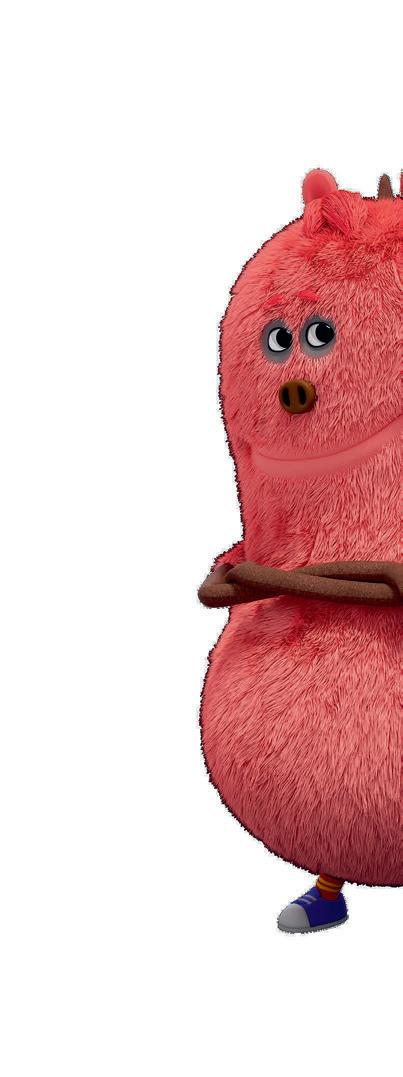

BBC Studios is harnessing the power of social media in its latest call for original content.
screen
Dubit suggests three ways streaming services can stop the hop and build loyalty with families.
consumer products
If you want to resonate with kids and parents at retail, you’ll need to get a little crafty.
kid insight
Better mental health narratives in kids content are a must, according to Nickelodeon.
tech
Scriptsee lets producers visualize scripts—and it could save them a ton of time and money.

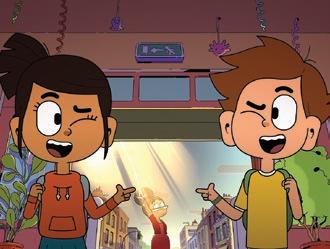
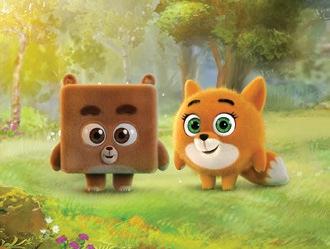
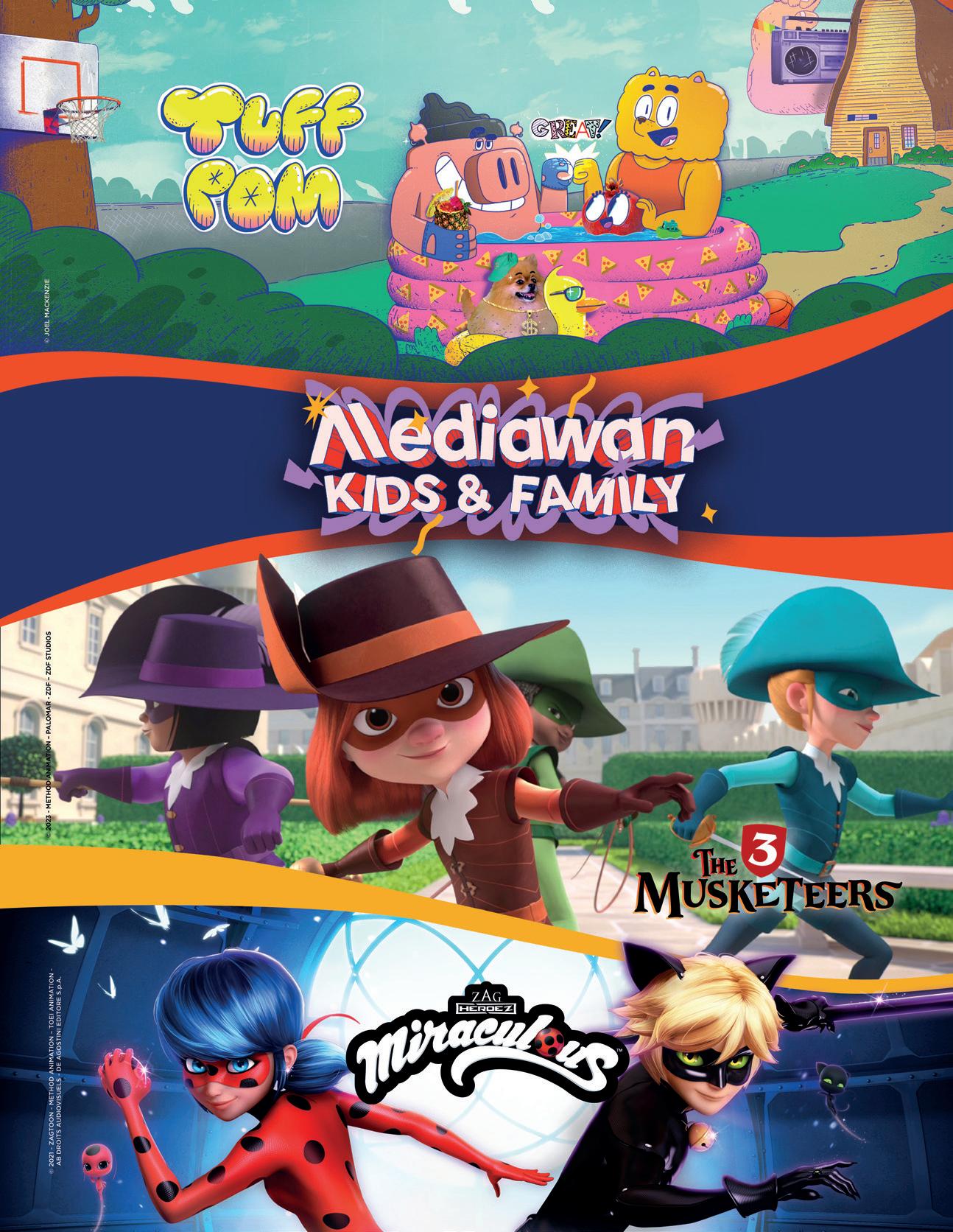

oesn’t it seem like just yesterday that Gen Alpha was the shiny new demographic of future consumers and viewers that we all had to figure out how to reach? Well, somehow 15 years have gone by since then, and now we’re on the cusp of having to do it all over again.
The first babies belonging to Gen Beta will start to be born in January 2025, and they’re tracking to make up 16% of the global population by 2035. While it will still be a few years before they have any significant influence on family purchasing and entertainment choices, I thought it might be interesting to take a look at some of the earliest predictions about this new generation that are beginning to percolate in researcher circles.
There’s no question that Gen Beta will be shaped by technology integration, given that they will grow up in an AI-generated world and be raised by chronically online parents. And with fertility rates dropping fast in many parts of the world, more only-children in the market may galvanize the development of artificial friends, creating an opportunity for character and toy brands to fill the void. Kids could even start interacting with AI-trained versions
of themselves on social media, but this has some pretty scary implications for mental health, echo chamber bias and a whole host of other things we’re not ready for yet.
I did find some speculation out there that AI saturation might lead to a higher value being placed on reality and authenticity, which made my heart happy. And this could certainly have an impact on the kind of entertainment Gen Beta gravitates towards, perhaps laying the groundwork for greater interest in documentaries, reality formats and true-story limited series and feature films.
In the wake of the pandemic’s lockdowns and a general feeling that too much indoor isolation is unhealthy, there’s also a brewing movement among Gen Alpha to be outdoors as much as possible. And researchers are expecting this to transfer and amplify in Gen Beta, along with a deep concern for the environment. It will be really interesting to watch how both of these trends are manifested in AI-driven applications developed by Beta to forge deeper connections with nature and preserve the planet.
One thing that’s for certain in the midst of all this theorizing about what’s to come is that Gen Beta will be shaped first and foremost by their families at home. So perhaps the smartest thing we can do right now to understand them is to understand their younger Millennial and older Gen Z parents. Stay tuned—we’re working to bring you some research along these lines in one of our upcoming issues. And until then, my suggestion for the future of our business is… start making more Gen Beta babies, lol!
Jocelyn Christie SVP & Publisher, KidscreenSVP & PUBLISHER
Jocelyn Christie jchristie@brunico.com
EDITORIAL
ASSOCIATE EDITOR Janet Lees jlees@brunico.com
FEATURES & SPECIAL PROJECTS EDITOR
Jeremy Dickson jdickson@brunico.com
SENIOR REPORTER Ryan Tuchow rtuchow@brunico.com
STAFF WRITERS
Sadhana Bharanidharan sbharanidharan@brunico.com Cole Watson cwatson@brunico.com
CONTRIBUTORS
Christopher Byrne, Ron Geraci, David Kleeman, Makeda Mays Green, Gary Rusak, Colleen Russo Johnson, Adam Woodgate
BUSINESS DEVELOPMENT & ADVERTISING SALES (416) 408-2300 or 1-800-KID-4512
ASSOCIATE PUBLISHER Maggie Wilkins-Hobbs mwilkins@brunico.com
ACCOUNT MANAGER Lia Minquini lminquini@brunico.com
CREATIVE CREATIVE MANAGER & ART DIRECTOR Taylee Buttigieg tbuttigieg@brunico.com
AUDIENCE SERVICES DATA INTEGRITY & CUSTOMER SUPPORT SUPERVISOR Christine McNalley kidscreencustomercare@brunico.com
CORPORATE PRESIDENT & CEO Russell Goldstein rgoldstein@brunico.com
EVP, CANADIAN MEDIA BRANDS & EDITORIAL DIRECTOR Mary Maddever mmaddever@brunico.com
SVP & EXECUTIVE DIRECTOR, NATPE GLOBAL Claire Macdonald cmacdonald@brunico.com
SUBSCRIPTIONS To order, visit www.kidscreen.com/subscribe. To make a change to an existing subscription, please contact us by email (support.kidscreen.com). Fax: 416.408.0249 Tel: 416.408.2448. Kidscreen is published five times per year by Brunico Communications
REPUBLISHING
POSTMASTER NOTIFICATION US Postmaster: Send address changes to Kidscreen, PO Box 1103, Niagara Falls, NY, 14304. Canadian Postmaster: Send undeliverables and address changes to Kidscreen, 8799 Highway 89, Alliston, ON, L9R 1V1. Canada Post Publication Agreement number 40050265 (printed in Canada) ISSN number 1205-7746 - ©Brunico Communications Ltd. (2024) Kidscreen® is a registered trademark of Brunico Communications Ltd.
Watch for our next issue!
Street Date: September 9
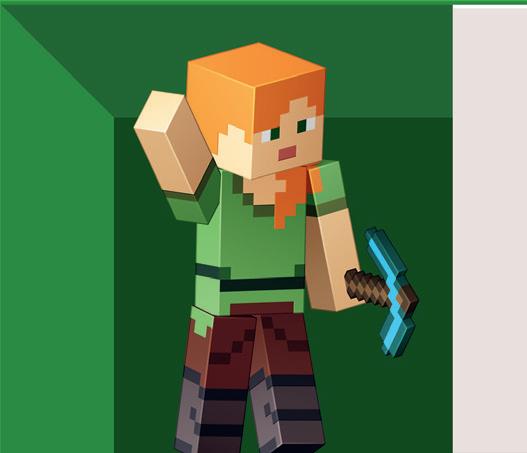
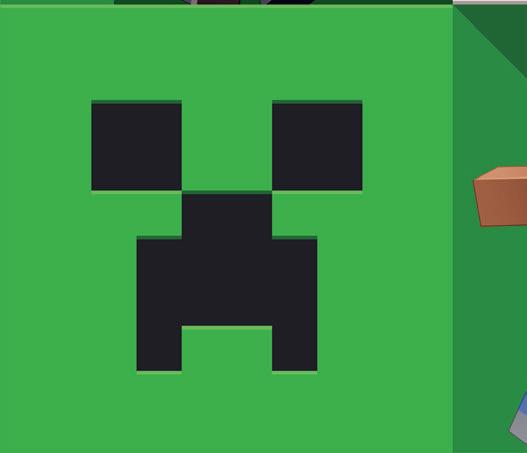



As Paramount sheds what isn’t core value to build appeal for potential buyers (R.I.P. Noggin), rumors continue to fly about who will end up acquiring the company that earned US$29.6 billion in revenue last year. Sony is reportedly the latest bidder for the parentco of Nickelodeon, MTV and Paramount+, in a joint offer with Apollo Global Management (owner of Yahoo!). Other companies that have been floated as potential buyers include Skydance, Warner Bros. Discovery and Allen Media Group (which owns The Weather Channel).
Paramount’s overall revenue for 2023 was only down 2% from the previous year, but the company’s filmed entertainment (down 31%) and TV media (down 12%) segments were hit hard last year. Paramount has consistently maintained that kids content is important to the company, saying that it drives subscriptions, consumption and repeat viewing. But at the same time, it has removed several kids shows from Paramount+, putting the future of titles like 2021’s Rugrats reboot and Blue’s Clues & You! in limbo. Will a suitor step in to acquire the company and breathe new life into its kids business? Or will Paramount continue to cut children’s content as it seeks to improve its bottom line for prospective buyers?

In short order, Roblox has become a major gaming hub, a licensing frontier and even a place where kids can stream shows. The platform has just hired three new execs for its global partnerships team (including a former Disney VP) to work with more companies interested in reaching its 71 million active users.
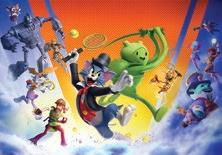
Warner Bros. Discovery, Nickelodeon and Disney have recently teamed up with pro sports organizations to create animated versions of NHL and NFL games, with the goal of winning over a younger generation of fans by animating famous players and bringing iconic cartoon characters into the game.

In a risk-averse landscape, family-friendly influencers are coming out on top and scoring lucrative content deals. The latest examples are sporty YouTuber squad Dude Perfect locking down a US$100-million-plus investment from Highmount Capital in April, and tween-favorite internet sensation MrBeast landing a competition series commitment from Amazon MGM Studios in March.

In order to attract old-school subscribers, Disney+ is reportedly planning to launch a series of always-on channels that will offer 24/7 content feeds from brands like Marvel, Star Wars and Pixar. This would certainly boost discoverability for the media giant’s vast library. And with a password-sharing crackdown on the way, Disney+ might be closer than ever to its year-end goal of DTC profitability.
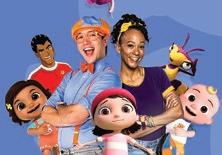
After six years of huge gains in the preschool content market, Moonbug is ready to expand its horizons. In March, the company launched linear net Blippi & Friends in MENA, catering to a slightly older demo of four- to eightyear-olds, while its upcoming 2D-animated series VeeFriends will target six to 11s.
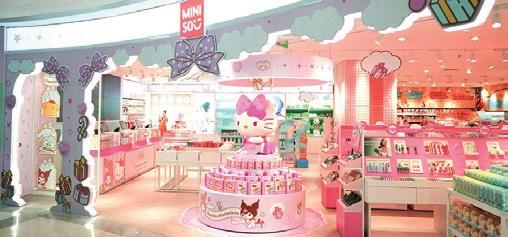
MINISO is teaming up with partners including Sanrio and Mattel to open a bunch of new collection stores around the world that lean much harder on brands like Hello Kitty and Barbie. The Chinese retailer is on track to launch 650 new storefronts by the end of the year, showcasing its ranges of licensed and original collectibles, lifestyle items, stationery and housewares to more consumers.
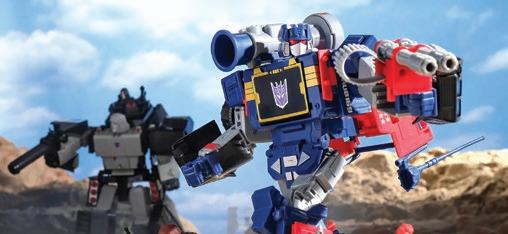
After catching on quickly in the toy industry, the co-branding trend is also sparking some early flames in entertainment circles. Hasbro is bringing together its iconic Transformers and G.I. Joe brands in a new live-action feature film that’s in development for 2025 or 2026. And the Joes and Autobots are also buddying up in a new “Energon Universe” comic book series from Image.

Same team, different genre
Netflix has restructured its film division to focus on genre rather than the size of a project’s budget. Kira Goldberg (Yes Day) has been tapped to oversee family films in this new setup, which took effect in April under the leadership of the streamer’s new film chairman Dan Lin.

Shop till you drop (the remote) Shoppable TV—which lets viewers directly purchase products they see on TV—is on the way. Amazon has launched a shoppable FAST channel, and Disney is testing an ad program where consumers can buy what’s on TV using their phones. If this takes off, streaming could become the future of shopping.
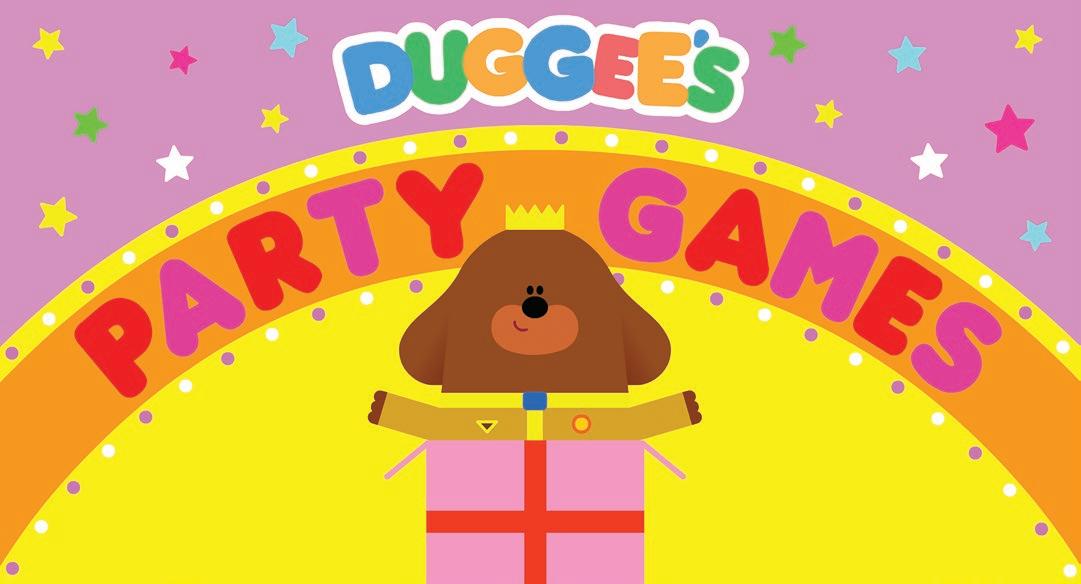
BBC Studios Social put out a call for pitches for Bluey and Hey Duggee (pictured), and will announce in June which two or three projects for each will be greenlit
Transitioning from digital marketing to original content creation, BBC Studios Social is becoming a buyer in its own right.
BY: RYAN TUCHOWMarch, BBC Studios Social issued its first-ever open call for original content pitches, signaling a major change in strategy for a division that until now has been more about amplifying Beeb brands with traditional digital marketing.
With a submission deadline of April 21, this callout was specifically for shorts centered around food and family fun for Bluey, activity-focused play for Hey Duggee, and younger-skewing concepts for adult brands Top Gear and Funny Parts (YouTube channel).
The team is currently reviewing pitches, and plans to announce which ones will be greenlit in June. The deals it’s offering follow a typical buyout model—BBC Studios will pay to own the content, with a ballpark budget ranging from US$1,500 to US$1,900 per minute. And director of digital content development Chris Allen expects to commission two or three concepts each for Bluey and Hey Duggee out of this initiative.
Allen says the goal is to create new relationships with talent worldwide, bringing more diverse content approaches to BBC’s brands, and ultimately gaining a better understanding of what audiences want to see.
Social has been providing the pubcaster with a testing ground for trying out new content concepts with less risk and less cost for some time now. But the reach in these streams has grown exponentially.
BBC Studios Social currently operates more than 90 channels across all major platforms for BBC brands, including its kids juggernauts.
Looking at Bluey’s social presence alone, the preschool brand has 3.4 million followers on TikTok and 5.56 million YouTube subscribers. All told, the social team’s videos generated 6.9 billion views last year.
And this magnitude has opened up a whole new world of possibilities—including the potential for original content to make the jump from BBC’s social channels to wider distribution, linear TV and licensed products, says Allen.
Illustrating this potential, the social team greenlit an original game show format called Hack Attack from BBC Studios in 2022 that has since been added to the division’s global sales catalogue.
Last year, BBC Studios Social commissioned 1,500 minutes of original content, and the goal is to exceed that in 2024. To get the ball rolling, a series of videos ordered from Ludo Studio featuring celebrities reading stories inspired by Bluey episodes dropped in February, and has generated more than 16 million views so far.
“We were 100% about digital marketing, and now we’re in this transitional phase where we’re more about commissioning and commercialization,” says Allen. “We have an opportunity as a giant corporation to invest in new content. It’s a key way to expand our brands, formats and talent.”



Jakks Pacific and Epic Story Media are racing to market with Wild Manes, a new equestrian brand with a 360-degree launch strategy.
BY: COLE WATSONoyco Jakks Pacific and Toronto’s Epic Story Media are about to launch a new horse-themed IP called Wild Manes that they’ve co-created and gotten market-ready in just 18 months, with a 2D-animated series, Roblox game and toy range all poised to roll out in this summer.
Why the full-gallop approach? “We’re operating in a fandom-focused industry now,” says Epic Story CEO Ken Faier. “The 360-degree launch strategy is the most efficient way to create a brand around story and toys, and quickly build an audience on a global scale.”
At its core, Wild Manes revolves around four friendly fillies having adventures and solving community problems in the fictional coastal town of Wild. Concept development only started in January 2023, and the original plan was to kick off with a small toy line for Jakks’
2024 lineup, says senior director of marketing and girls toys Greta Salmon. To start conceptualizing products, her team conducted months of market research, interviewing parents, retailers and girls—and the intel that came back identified a white-space opportunity that underpinned the decision to fast-track the IP into animation and gaming right away.
My Little Pony is well-entrenched at retail and on-screen, but the Hasbro franchise skews younger (towards more of a four to seven crowd), whereas Wild Manes is going after six- to 10-year-olds. Salmon says these slightly older girls are quickly moving away from this kind of fantasy play because there’s currently nothing in the market for them once they outgrow unicorns and ponies. They’re demanding a new, modern take on horses with more grounded and realistic
storytelling they can relate to—and that’s what Jakks and Epic Story intend to deliver.
Leading the charge to market is a Wild Manes YouTube Kids series (40 x five minutes) that will start rolling out in late June. Its short-format episodes are produced by Epic Story’s Loomi Animation studio, and each one tackles a social theme that girls this age typically encounter, from planning a surprise party for a friend, to hosting a spa and makeup day at the clubhouse. Faier first pitched the series to broadcasters at MIPTV in April, and he will continue these efforts to sell it in at Licensing Expo next month.
Meanwhile, Epic’s Freeground Roblox studio will introduce a no-frills Wild Manes game to the platform in late June. Catering to older girls entering their tween years, its gameplay will be simple to start—players can explore the town with characters from the show, completing quests to unlock avatar customizations like clothes and hats. Despite the experience being stripped-down at launch, Faier says this strategy means Freeground will be able to develop future updates based on exactly what the game community asks for, rather than investing months of time and money into blindly creating new elements.
Wild Manes toys from Jakks will hit retailers including Walmart and Target on August 1, after the animated series and Roblox game have seeded the market for a couple of months. The plan with the toy line is to appeal to the younger end of the brand’s target demo by leveraging a wide range of play patterns including dolls, fashion, accessories and hair play. An initial range of 12 SKUs will feature core horse dolls (US$9.99), horse & cart bundles (US$21.99) and a deluxe trailer playset (US$34.99) that converts into a clubhouse.
“This is the quickest we’ve ever moved on anything, and I love it because we have a lot of inertia going on in the kids media space right now,” says Faier. “Everybody is struggling with figuring out their profitability. But that’s changing as companies realize how hard it is to build a hit when you don’t have a great toy, gaming, social media and audience strategy all attached to the show.”

THE BIG GIG: VP of development at Kickstart Entertainment
PREVIOUSLY: VP of original series development at Cartoon Network Studios
TV CONNOISSEUR: After starting out as an assisitant to a theater agent in the early ‘00s, Rivera pivoted to kids entertainment in 2007, when she joined the Nickelodeon acquisitions team. She then moved on in 2008 to spend 14 years at Cartoon Network, other than a brief stint at Universal/DreamWorks Animation from 2016 to 2017. “I worked closely with show teams and various departments. [That’s how] I learned the strategies of programming, marketing and consumer products, and how all of those pieces work together.”
CREATIVE CALLING: Rivera joined Kickstart Entertainment last October to shepherd an expansion of the LA-based studio’s originals slate—using her sharp eye to reel in strong IPs and then set up international co-pro opportunities for them. “I’m really getting to stretch my creative skills,” she says. And Kickstart’s indie setting is giving Rivera a fresh POV from working more directly with owners/ stakeholders on planning projects. In addition to publishing and live-action strands, the 25-year-old studio has a long animated service history and has worked on toons like Hot Wheels Monster Trucks and Deepa & Anoop. But a recent spate of in-house projects—from 2020’s StarBeam to Pretty Freekin Scary in 2023 is signaling bigger ambitions.
KICKSTART STRATEGY: Rivera has clear strategies when it comes to navigating market uncertainties— tap into shows with great CP potential, lean away from oversaturated genres (like superheroes), and focus on serving demos with the most reliable buyer interest (preschool and adult animation).
To stand out in today’s competitive preschool market, Rivera looks for “existing IPs that we can help to breathe new life into.” One example is The Treebees, a YouTube-first brand (79,600 subscribers) about three singing puppets that was created by kids songwriter Daniel Ingram. Kickstart is busy turning this property into a long-form series that will trade in puppetry for a new animated look.
Another way to stand out? Mashups that put a fresh spin on familiar tropes. For example, Toolbox Heroes is a kids series that Kickstart is developing with British toyco FUSE London, featuring mini-robots fixing a house and stopping evil dust bunnies. The premise has DIY, construction and miniature play patterns built in, which should set it up nicely for business in toys and other licensing categories.—Sadhana Bharanidharan

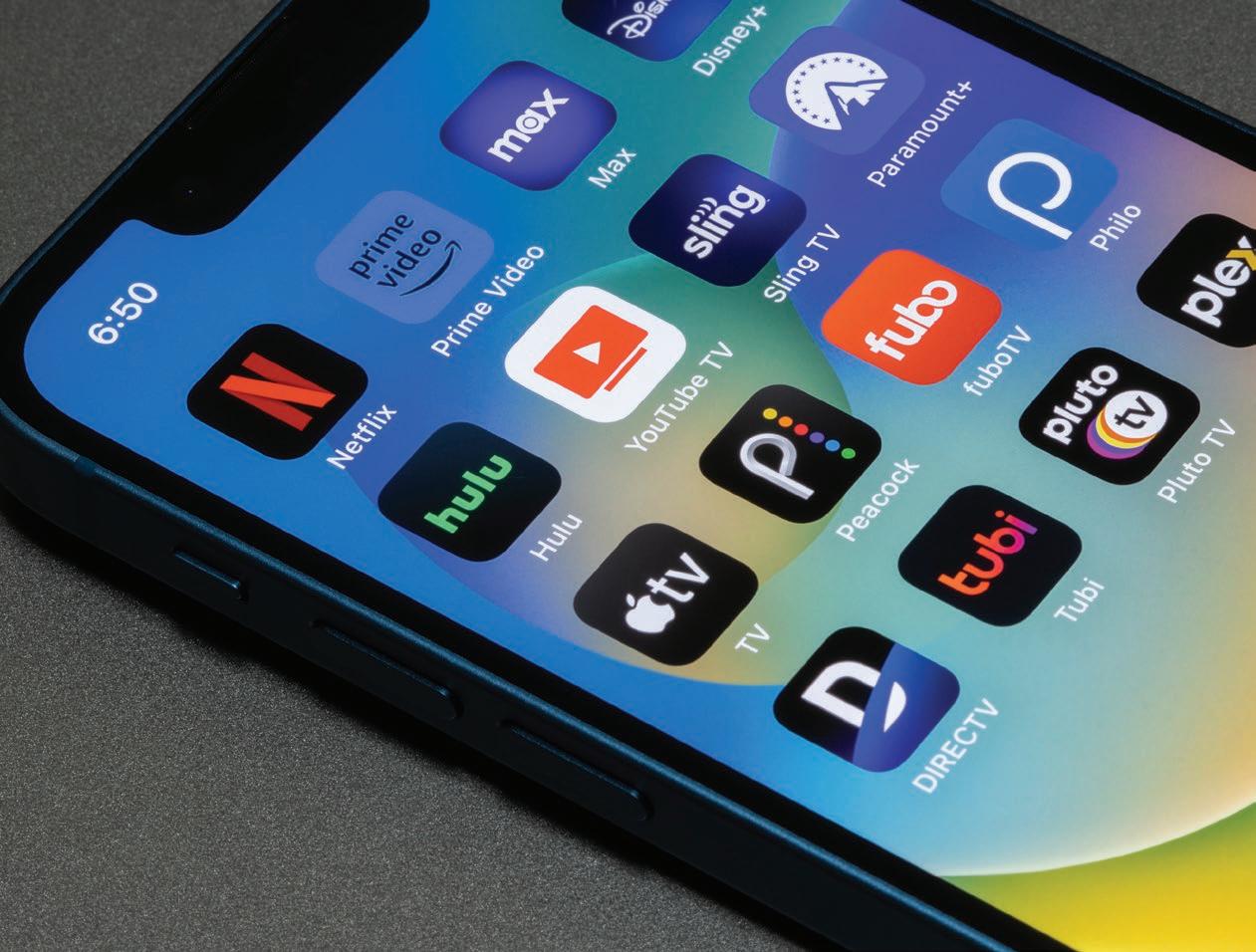
Credit:
Dubit explores three keys for fostering streaming service loyalty among kids and parents.
BY: DAVID KLEEMAN & ADAM WOODGATEchildren’s and family media, discovery is just the beginning. Whatever your financial model—subscription, advertising or transaction—you must establish, build and nurture loyalty to convert finders into fans. And with so many platforms available for video, music, games and more, there’s always a temptation to “hop” from one service to another—otherwise known as “churn.”
According to Aluma Insights, nearly half of all families consider themselves “occasional hoppers,” swapping out 1.4 streaming subscriptions on average each year. And an additional 17% describe themselves as “moderate or heavy hoppers” who change two or more. Given the growing role of paid services in family entertainment consumption, this might not seem like a large number—but it has risen by 143% since 2018.
Towards the end of the pandemic, Dubit forecast that families would feel the need to pare back their streaming subscriptions, which
had increased during lockdowns in order to provide entertainment and learning while kids were stuck at home.
As it turns out, this cutback didn’t happen to the extent that we anticipated. In six countries we surveyed in 2023 (Australia, Brazil, France, Italy, the UK and the US), only about a quarter of families said they had recently reduced the number of video streaming services they paid for, and more than two-fifths had made no changes. Families with new school-aged children (five to seven) were the most likely to have dropped subscriptions, perhaps because their kids suddenly had a lot less free time.
Looking to the future, only 17% of parents say they plan to drop subscriptions in the next six months, and 48% don’t anticipate making any changes. To some extent, streaming services have become a household necessity. “It’s a bit like a mobile line rental—a necessary utility cost,” said a mom of two kids, ages four and 10.
Nevertheless, in an industry where consumers’ options are reproducing like rabbits, subscription-hopping is an ongoing concern. After all, customer acquisition is very costly at up to US$200 per subscriber.
Parents are clear about the attraction of paid streaming services. They want kid-friendly content that’s easy to navigate so their children can manage it for themselves. And they want significant variety so their kids can always find a favorite show or sample something new.
“Content is the thing that makes us change… we had watched everything on it that we wanted to see,” said one mom of a five-year-old.
The downside of a deep library is a “paradox of choice”—families definitely don’t want to spend more time looking for their next show or movie to watch than actually watching it.
Parents are also anxious about the growing cost of subscriptions, so free ad-supported television (FAST) services will likely continue to experience swift growth. We’ve long theorized that when forced to choose between monthly payments and advertising, parents will abandon their anti-commercial views pretty quickly and choose the “free” service.
“My kids are used to ads while they watch YouTube, so it wouldn’t bother them…[but ads are] a bit of a kick in the teeth if you’re already paying,” noted one father of an eight-year-old and a nine-year-old.
For kids, there’s one big driver: Can I see what I want when I want it? This builds the case for Changed VOD subscriptions in the last six months Plan to
One-sixth of US families have reduced VOD subscriptions in the last six months. One in seven will be reducing subscriptions in the next six months.
Maximize reach
Monetize
Develop/deepen fandom
Gain audience insights
Benefits to the child
Ease/safety of use
Cost to subscribe versus ads
Happy kid
Maximize reach
Maximize time spent
Build loyalty (retention/renewals)
Availability (what I want when I want it)
Ease of discovery
Ease of use
Engagement/enjoyment
Source: Dubit/Kidscreen Summit 2024
on-demand services of all types (subscription, ad-supported and transactional). That said, FAST channels—curated collections that require fewer decisions—are attractive to children who feel overwhelmed with options.
What, then, are the keys to stopping the hopping by fostering loyalty among both the viewers (kids) and the bill-payers (parents)? Here are three essential influences:
1. Build trust
Discussing choices around subscriptions, parents emphasized the necessity of trust. They are slow to give it, and very quick to revoke it.
Some key questions they may ask are: “Is the content carefully curated for young audiences?” and “Will we avoid the kind of surprises that can too often crop up on UGC platforms like YouTube or TikTok?”
Streamers must ensure that children can easily and safely navigate alone, perhaps with a “kids” setting to guard against mistakenly wandering into inappropriate content. This will also satisfy producers and distributors—like realtors, they want a safe and appealing neighborhood for their content. Ideally, though, a “walled garden” needs movable walls that allow parents to expand or contract permissions based on age, development and family values.
2. Be indispensable across ages
While children’s content is a big factor in deciding whether to subscribe to a service, broad family appeal prevents churn. Parents decide where to spend their money, and when they drop a subscription, it isn’t necessarily the most expensive platform or the one with less content that they choose to cancel; it’s the one with the least emotional resonance. They don’t want their kids to scream because they’ve lost a favorite show, but they also think about whether the platform sits idle once the kids have gone to bed.
“I dropped Netflix for a bit because there was nothing we were enjoying, but then Squid Games came back,” said a mom of kids ages one and four.
Co-viewing activityy remains high post-pandemic, with both parents and children valuing the shared time that was
COVID-19’s one silver lining. A strong selection of cross-generational content can often boost time spent watching together—a key loyalty metric for platforms.
3. Offer off-season content
Generation Z grew up with ubiquitous and on-demand content, while Gen Alpha was born into a world of watching on mobile devices. Today’s young people don’t understand the argument that “you can’t watch it because it’s not on now.” And yet, beyond what’s available on UGC platforms, most content is produced in batches or seasons, leaving long gaps between new episodes.
Every IP needs a cross-platform strategy to sustain engagement for these generations of young people who chase their favorite stories and characters all over the media universe. An “off-season” plan might include behind-the-scenes content, clips, remixes or even testing of future elements designed to keep fans engaged and anticipating the next episode’s release. (Distributors will appreciate that this may boost discovery, hooking new viewers on older content.)
Gen-Z and Gen-Alpha fans want to create content as well as consume it. So an “off-season” strategy should consider UGC gaming and video platforms, because IP owners willing to permit some fan fiction, art and game-building can deepen brand love, loyalty and sharing among their subscribers.
Other factors that may help stop subscription hopping include exclusivity versus windowing versus shotgun distribution; whether episodes are dropped all at once or weekly; and an increasing global outlook and consumption of international content among young people. It’s a Rubik’s Cube of elements that the four key stakeholders—kids, parents, producers and distributors—will need to puzzle out in order to see how interdependent they really are.
David Kleeman, SVP of global trends for games studio and research consultancy Dubit, has led the children’s media industry as a strategist, analyst, author, speaker and connector for more than 35 years.
With 30+ years of media, marketing and market research experience, Dubit’s SVP of media insights Adam Woodgate provides strategic advice to broadcasters, publishers, advertising agencies, media buyers and content creators worldwide. He also heads up Dubit Trends, the largest global children’s media trends tracker.
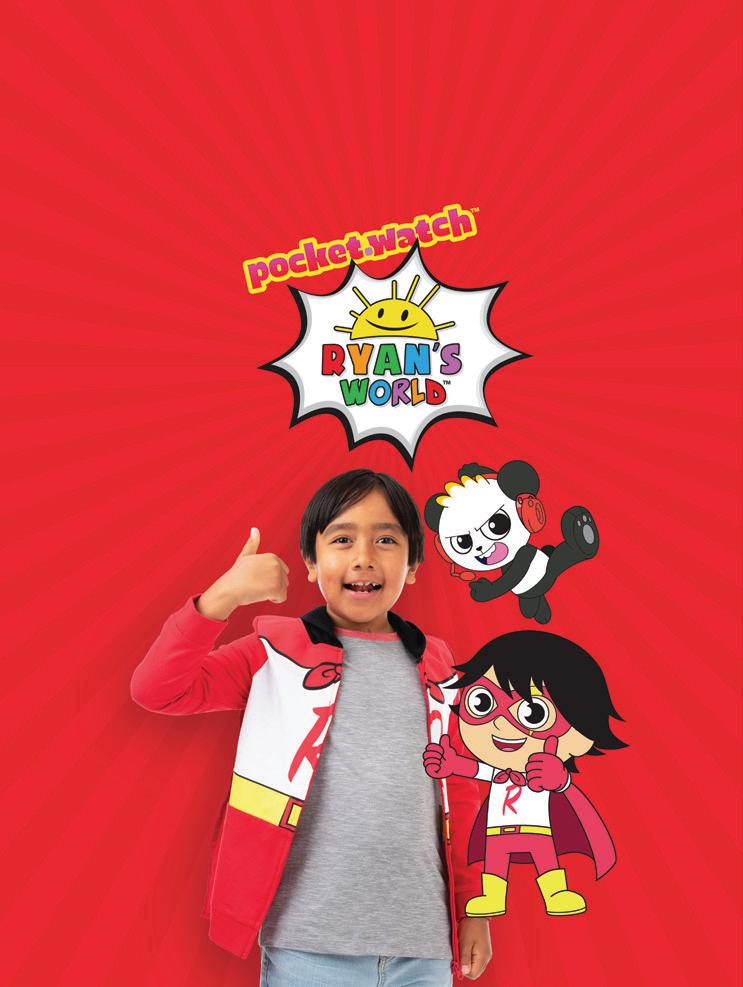


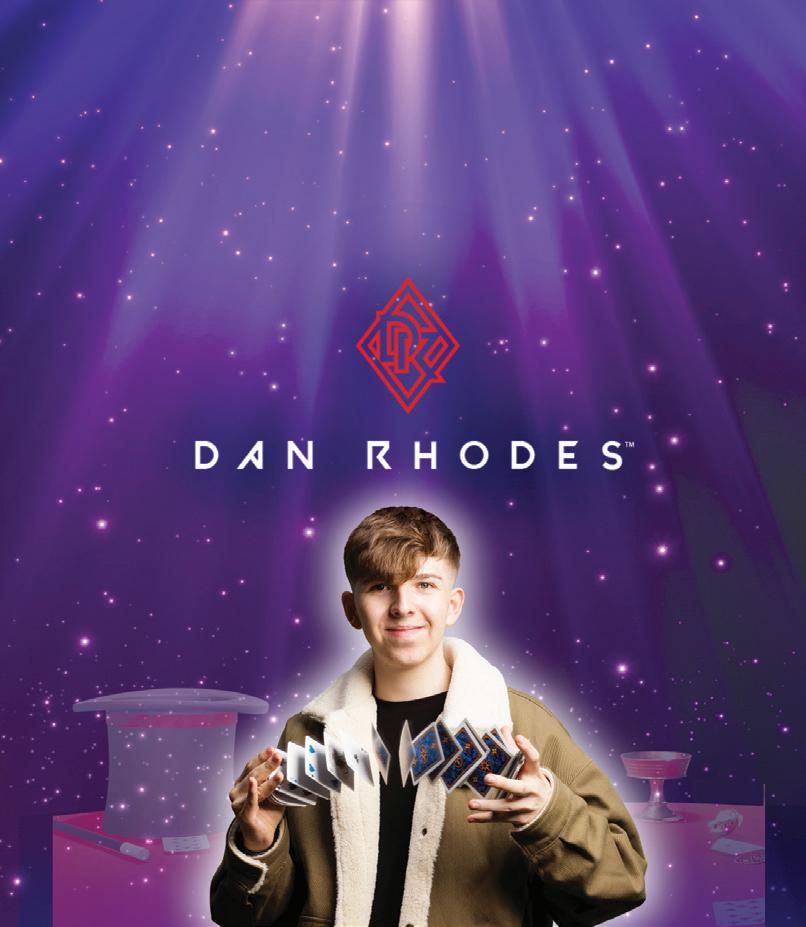


Electrify Video Partners is investing US$85 million in kid-skewing YouTube channels.
BY: RYAN TUCHOWyou own a YouTube channel for kids and families that earns at least US$500,000 in annual revenue and are looking to grow, then Electrify Video Partners wants to connect.
That’s the message from the London-based company, which raised US$85 million from private equity fund Capital D in September to scale the production and distribution of YouTube channels that fit its model.
Founded in 2021, Electrify has invested in six channels so far with upwards of 30 million subscribers total and more than 10 billion lifetime views. Veritasium (15.3 million subscribers), Astrum (1.9 million subscribers), Simple History (4.7 million subscribers) and Improvement Pill (3.6 million subscribers) skew a bit older. But for kids, there’s LEGO fan hub SpitBrix (856,000 subscribers) and a pair of puppet-driven channels called Fizzy Fun House and The Fizzy Show (10 million subscribers combined).
Electrify is especially interested in educational and inspirational channels for kids, thanks mainly to the evergreen nature of their content. And this likely stems from co-CEO and co-founder Ian Shepherd’s professional background. He was a business development manager at Turner Broadcasting (including a stint at Cartoon Network) and also worked at Disney as head of business development, with a focus on its Maker Studios channel aggregator and talent incubator.
Beyond infusing its partner channels with cash, Electrify is also interested in recruiting new talent and running day-to-day operations so that creatives don’t need to sink all their energy into growth. Science-focused education hub Veritasium offers a good example of this model at work.

Derek Muller, who manages the channel’s content, says he was working 60 hours a week creating videos and running operations. But since Electrify made its 50% investment in April 2023, Muller only works 60 hours a month, his team has tripled to 12 people, and two million more subscribers have joined.
“When you’re working for yourself, work can end up taking over your life,” says Muller. “I knew that the pace I was going at in 2021 was unsustainable. I would much rather focus on how to explain and illustrate a complex physics topic, than on figuring out who to hire and how to obtain insurance and permits and deal with finances.”
When Electrify invested in astronomy channel Astrum three years ago, owner Alex McColgan was making all of the content himself and wasn’t able to grow. His new partner has since hired seven people to help run things, and McColgan says Astrum’s revenue has more than tripled. It’s also starting to be seen as a leading media brand in the field of astronomy.
“I can make longer and more ambitious videos, and I would say the value of them has increased,” adds McColgan. “An additional benefit has been the possibility to collaborate with other big channels that are part of Electrify’s network.”
The investment process usually starts with two to four months of due diligence while Electrify develops a better understanding
of the channel, its audience and the owner’s goals. In go scenarios, the company typically pays channel owners between 50% and 80% of their business value, works with them to expand and create new revenue streams, and then shares in the profits. Owners looking to simply accelerate growth may bring Electrify in as an equal partner (for a 50% stake). Or if they are looking to step back and do less, Electrify can pick up more equity and take the lead on managing day-to-day operations and growth.
And there’s always the option for owners to exit their channels entirely by selling them to Electrify—although fewer than 10% of the prospective partners the company has talked to have been interested in this, Shepherd notes with some surprise. When he saw the success Moonbug had after acquiring CoComelon, he thought full buyouts would become a more prominent part of the business. But in reality, most YouTube creators love the work of making content and running a channel—they just need more support to build them into businesses.
Heading into the back half of 2024, Electrify plans to unveil two new investments and is looking to start a pipeline of discussions with other prospective partners. Shepherd encourages interested owners whose channels are at the US$500,000 annual revenue threshold—or close to it and growing quickly—to reach out to him directly (ian@electrify.video).
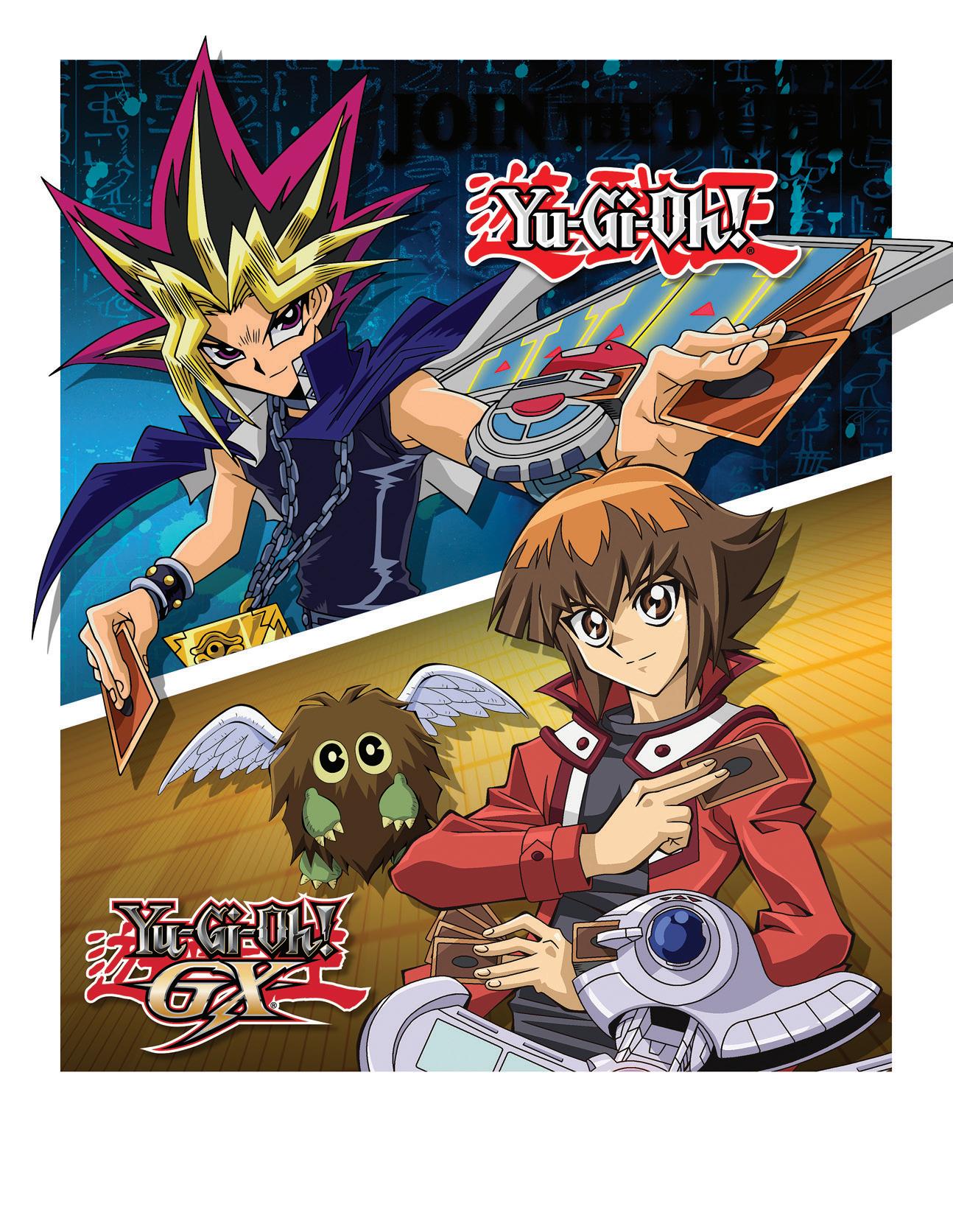

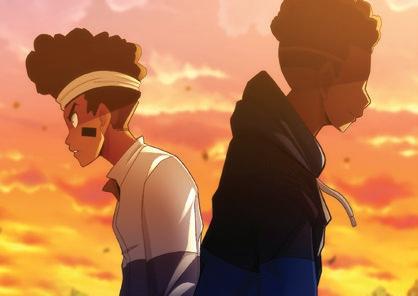

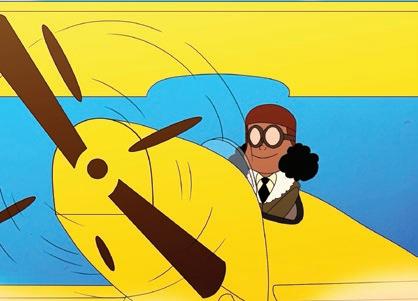
Kidscreen checks in with a new, established or evolving kids content buyer to find out what they’re looking for right now.
BY: SADHANA BHARANIDHARANhen streamers curate collections dedicated to Black voices, they often mix kids content with more adult-skewing titles, creating an obstacle course for family audiences. Enter Larry Adams, a digital media veteran and former chief brand officer of HBO Max, who found himself asking the important question: “How do we navigate this space when we’re all relegated to one overarching category?”
His answer to this dilemma is a no-fee AVOD platform called BLKFAM that’s looking to fill the gap and become a trusted co-viewing destination by “aggregating voices [and] stories of the Black family diaspora.” After generating big buzz with actor Whoopi Goldberg’s backing of the service as an equity investor, BLKFAM launched in February and attracted a “more-than-anticipated” number of signups in its first month. It is currently available in Canada and the US on Roku, Amazon Fire TV, Apple TV, Vizio and iOS/Android devices.
Families—and Black US families, in particular—are a low-churn demo that tends to stay subscribed to streamers, Adams notes. Black viewers also drive major growth and demand. Two-thirds of them want more Black representation on screen (Nielsen, March 2024), and 80% use free OTT services (Horowitz Research, April 2023).
What is BLKFAM looking for?
At the moment, Adams is aiming to expand the initial library with more familytargeted animation because this genre resonates well with kids and Millennial/Gen-Z parents. He is open to projects at any stage, but is especially excited to discover early concepts and unique IPs that BLKFAM could help incubate.
“We want fresh ideas. [There’s] been a sea of sameness in relation to what gets produced for Black audiences on streamers and linear,” Adams says. One specific item on his wishlist is Black storytelling with a futuristic premise, which has proven to be impossible to source in the market. Adams does not want content that skews into mature territory (such as reality programming with dramatic outbursts) because it may risk earning a side-eye from grownups in the room.
On the live-action front, Adams is bullish on family competition formats, which could serve as an effective bridge for bringing together tween and adult viewers. He also sees cross-generational viewing potential in bite-sized programming— that’s why BLKFAM is now busy developing content with ATTN: in LA, which specializes in snappy and informative online content.
Recent and upcoming releases
BLKFAM initially rolled out with just 10 shows, including adventure series Gabby Galactic (six x 11 minutes) and a collection of music-driven shorts called Black History Beats—both licensed from YouTube channel Playwatch Kids. Playwatch’s anime drama Clutch (six x 11 minutes) is set to launch later this year
And the company recently entered into an expansive partnership with The Africa Channel that includes co-branded content and co-development of a mutual “BLKFAM on TAC” programming block. The deal also includes plans to bring a BLKFAM hub to the network’s Demand Africa streamer later this year.
Larry Adams, founder of BLKFAM Set to launch on the platform later this year, Clutch is an anime series about the lives of high school football players Faith Mcgrace is one of several shows BLKFAM has licensed from YouTube channel Playwatch Kids
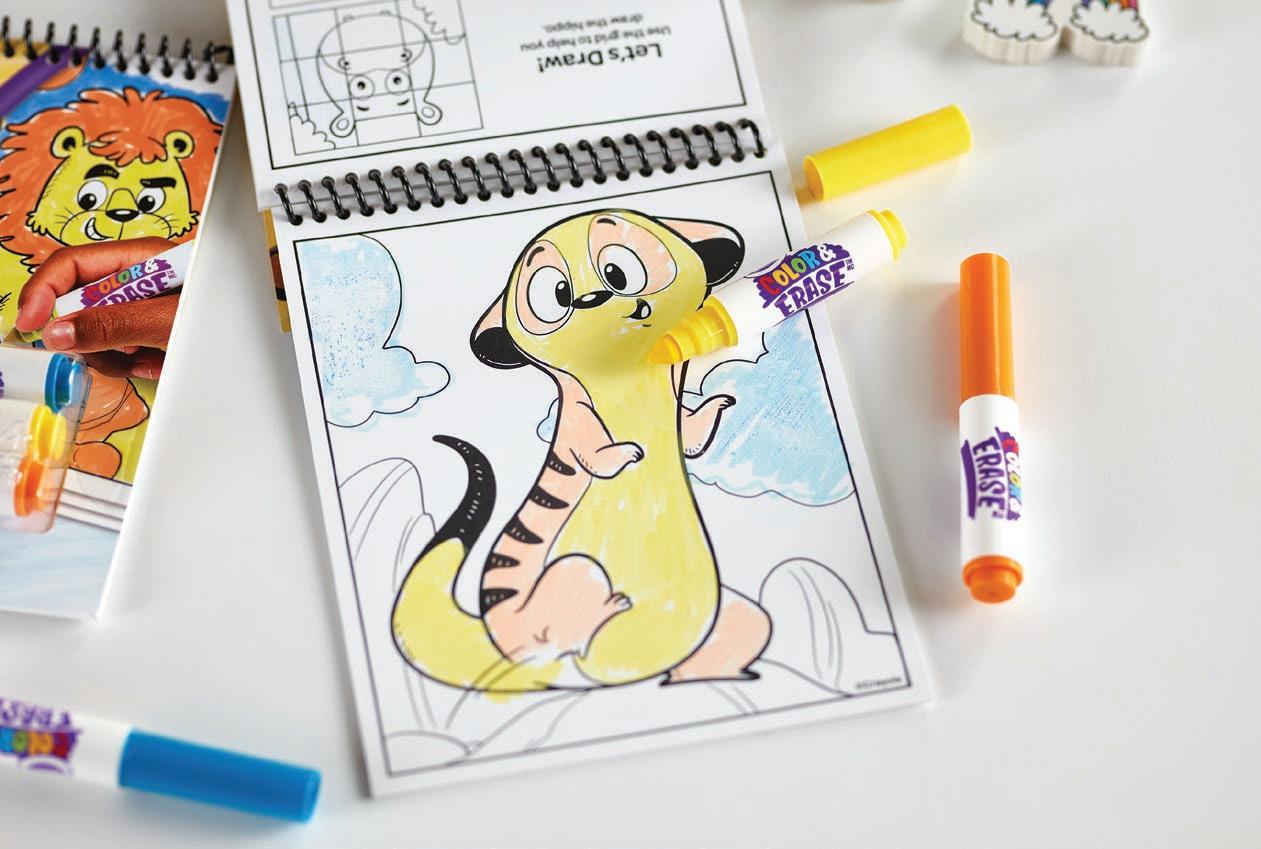
Arts & crafts giant Crayola has 99% awareness and 90% household penetration worldwide, but there’s still room in the market for smaller companies to grow—particularly those that find niches or offer innovative products that are eco-friendly, original or unique
The arts & crafts industry is ripe with opportunities for brand owners to translate their IPs into colorful new products.
BY: COLE WATSONffering consumers a diversified product mix is paramount when you’re building a brand-new licensing program for a kids franchise. And while evergreen categories like toys, publishing and apparel are certainly staples, there’s another category that has been gaining an impressive amount of momentum by giving kids a double-edged opportunity to immerse themselves in their favorite brands while expressing their creativity.
After experiencing a major boom during COVID-19, when extended lockdowns made many families desperate for any kind of entertainment that didn’t involve a screen, the global arts & crafts industry has continued to grow—albeit at a less meteoric pace.
In 2023, this segment generated US$43.4 billion in revenue, which was up by 11% from its pre-pandemic take of US$38.9 billion in 2019, according to a report published in January by Verified Market Research. And the
US research firm is forecasting 8.9% growth year over year until a projected revenue peak of US$79.2 billion by 2030.
The hardworking arts & crafts segment plays host to such a wide variety of product verticals—from paints, pencils and coloring books, to reusable compounds, putty and activity kits—that it has almost as much limitless potential as a child’s imagination. And that means plenty of room in the market for companies to find unique niches and grow.
In the case of Crayola, the 120-year-old craft giant’s product lines of crayons, markers and pencils have 99% awareness and 90% household penetration worldwide, says EVP of marketing Victoria Lozano. This market entrenchment and the company’s global distribution network allow it to sign new deals with licensors quickly and work with the hottest brands on the market, including CoComelon, Bluey and PAW Patrol.
But Crayola is also working hard to turn its own brand and original products into full-fledged franchises through animation,
location-based entertainment and licensing partnerships. “We see a tremendous opportunity for Crayola to expand beyond just manufacturing products with a 360-degree strategy,” says Lozano. “Hands-on engagement is so high right now with kids and families that it’s motivating us to extend our open-ended experiences to new categories.”
The product that best demonstrates this ongoing strategy is the Scribble Scrubbie Pets line of colorable plush, which hit retail shelves in 2019. This spring, the company will add jumbo versions of its Pets characters and a new airbrush boutique playset to the product range.
Over the past five years, Crayola has built out the brand’s entertainment offering with a mobile game that has racked up more than five million plays on the Google Play Store

alone; a dedicated play area to customize the toys at Crayola Experience; and a YouTube channel (151,000 subscribers) that features a mix of 2D- and CG-animated episodes.
And to reinforce this 360-degree initiative, last year the craft giant launched in-house kids and family entertainment division Crayola Studios, which is already hard at work co-producing an animated adaptation of The Alien Adventures of Finn Caspian podcast with New York-based MIMO Studios. In addition, the company is expanding its Crayola Experience family entertainment center business by opening six new locations worldwide by 2030 (for a total of 11).
While major players like Crayola, Arteza and Faber-Castell control the lion’s share of the arts & crafts market, there’s still plenty of white space where other companies can shake up an existing product category or deliver something new and innovative at retail.
Earlier this year, Paramount Consumer Products closed a deal with New Yorkbased Creative Kids Group to manufacture and distribute a new range of Nickelodeon Slime products in more than 40 countries worldwide. Creative Kids is set to deliver more than a million pounds of its “squishy green goo” this year alone, featured in a diverse line that includes scented pre-made jars, DIY kits, outdoor playthings and tabletop games.
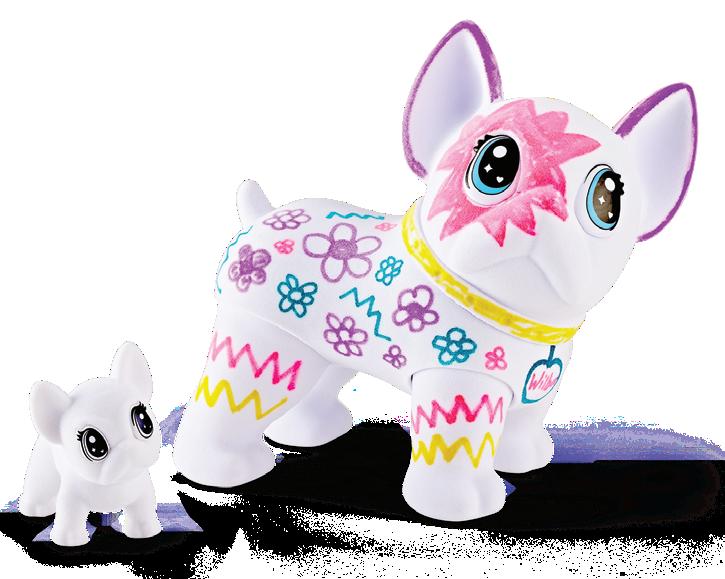
Creative Kids partner and chief marketing officer Daniel DeLapa says now is the perfect time for the company to dive into the slime biz because several current trends and market factors are converging at once—from the growth of sensory toys, to pop-culture exposure from the Nickelodeon Kids’ Choice Awards, to the powerful social presence of #slime on TikTok (134.8 billion views). And according to Ukraine-based research firm FinModelsLab, the global slime toy market is expected to expand to US$7.8 billion in annual revenue by 2026 as new competitors come onto the scene.
“While brand recognition is an important quality to have, the arts & crafts category shares a lot of similarities with the fashion industry, in that trends are what drive our business,” says DeLapa. “Consumers and culture today are completely different from the ’90s or early ‘00s. They’re less brand-conscious, but they’re hyper-aware of whether a product is ethically made and offers something original or unique.”
Outside of its deal with Nickelodeon, Creative Kids has ongoing partnerships with Hasbro to create Play-Doh Air Clay, with Moonbug Entertainment for Blippi and CoComelon-branded art mats, and with Miracle-Gro for paint and plant-growing kits. DeLapa says this licensing business has been a key driver for the company’s explosive international growth over the past five years; and this year alone, it has expanded from selling its products in 12 countries to more than 55.
To help take things to the next level, DeLapa is focusing on building Creative Kids’ YouTube presence, adding tutorial videos and other forms of interactive social content to complete the company’s flywheel. Over the span of eight weeks starting in January, the channel went from 2,000 to 13,000 subscribers, and its Nano Crafts series of videos on YouTube Shorts have surpassed 4.5 million views.
The strategy is to use the channel for marketing Creative Kids’ upcoming products, but also for identifying emerging trends in the market. (DeLapa’s other research tools include testing new products that appear on Amazon and scouring reviews from major retailers and influencers to study consumer pain-points that Creative Kids can focus on when launching new products in the category.)
“The next hot product that arts & crafts manufacturers are trend-hunting for is going to be born from something social, so you
have to embrace those channels,” DeLapa explains. “For Creative Kids, that materialized in building our own in-house creator team to help us understand the market, build our brands and generate ad revenue.”
When the pandemic lockdowns started, it wasn’t long before a wave of new toycos emerged, all looking to corner a piece of what was a growing and lucrative toy market and snap up popular brands for their licensed portfolios.
Sustainability—a traditional arts & crafts sales driver—is continuing to take center stage. This transition to catering to environmentally conscious consumers is drumming up new business for the arts & crafts category, and also for the wider toy industry. In 2021, the global sustainable toys biz generated US$18 billion in revenue, and Allied Market Research predicts that figure will jump to nearly US$60 billion by 2030.
One Canadian company that saw an opportunity to carve out a niche in the arts & crafts industry by tapping into sustainability is greenre Brand. Just five years old, greenre has licensing deals with Disney, Warner Bros. Discovery, MGA Entertainment and Rovio to produce a range of eco-friendly crafts made
with recycled and natural materials including bamboo, soy-based inks and recycled papers. To date, it has used more than 2,000 tons of recycled materials to manufacture its products.
The company’s top-performers are its licensed activity box sets and journals, which now sell at more than 30 major retailers in Canada, including Walmart, Toys “R” Us and Costco, says founder and president Keith Loiselle. His goal this year is to expand greenre’s domestic and international distribution channels, with a special focus on establishing the brand’s presence in the US and UK, where he says the sustainable toy trend is really taking off.
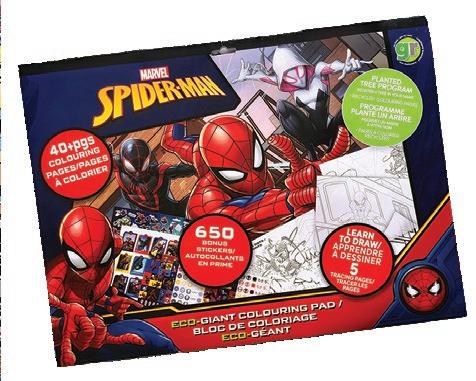
“We’ve seen a surge in demand for sustainable products with forward-thinking packaging, which has propelled consumer interest,” says Loiselle. “COVID-19 certainly posed challenges for us, but it also accelerated the shift towards eco-friendly products as consumers became more conscious of their choices.”
Also jumping on board the arts & crafts locomotive is Wyncor, a new toy manufacturer that entered the market earlier this year. Headed up by COO Helena Perheentupa, a former ZAG Play exec, the
The next hot product...is going to be born from something social, so you have to embrace these channels.
—Daniel DeLapa, Creative Kids


Florida-based company has already landed a series of licensing deals for PAW Patrol, Teenage Mutant Ninja Turtles, SpongeBob SquarePants and Miraculous that it will leverage in the upcoming launch of its Magic ReClay compound this summer.
Wyncor developed this patented product using dentistry technology that allows its clay to freely transform from a cured solid back to a smooth and soft state when warm water is applied. Each Magic ReClay kit comes packaged with two colored compounds and a figurine mold of a licensed character for kids to create. The company’s other arts & crafts brands include a range of Sprinkles ‘n’ Slimy activity kits, a customizable Swop Pops fashion bag line and a Miraculous-branded sewing machine.
What makes arts & crafts such an appealing category for licensors is that these products offer great value to consumers at a cheap price, and they also unlock new market segments, says Perheentupa.
“With so much information that kids need to absorb these days, creativity is an outlet for them to get their thoughts out—whether it’s cooking, creating or solving puzzles. [Arts & crafts] is one of the only toy categories where learning happens by doing, and it’s always fun for kids to link their creations with favorite characters they have an emotional connection with.”
Parents also seem to appreciate this learning potential. In its 2023 Toy Trends briefing, The Toy Association noted that 81% of parents say they are likely to buy at least one product a year for their kids that has educational value. And two out of three will consider how that product helps their child develop a new skill, such as cooking, drawing, cleaning or building something from scratch.
Creative Kids has added Miracle-Gro gardening kits and a Nickelodeon Slime range to its arts & crafts mix Five-year-old greenre has carved out a niche by tapping into demand for sustainable licensed productsToy expert Christopher Byrne interviews industry insider Karl Aaronian, SVP of marketing at Playmates Toys.
ince they first emerged from city sewers in 1988 as one of New York Toy Fair’s most iconic stunts of all time, the Teenage Mutant Ninja Turtles have remained a toy box mainstay, with total retail sales exceeding US$1 billion. Appealing to boys and girls alike, these “heroes in a half shell” have never gone away. And last year’s Mutant Mayhem film and toys gave the brand another huge boost, once again making Turtles action figures a category bestseller in several markets worldwide.
So what makes a property last 40 years and continue to be relevant well into its second generation of fans? We asked the guy who would know best: Karl Aaronian, SVP of marketing for Playmates Toys, who has been with the Turtles through pretty much their entire history.

CB: Let’s start with longevity. What has made this property last so long?
KA: Well, there’s the trite answer: They’re an evergreen. But you have to ask what makes something evergreen. In some cases, a successful brand may be a product of its time and place. It may be hard to bring it back when times change, or to translate a brand to a new generation of kids. But the Turtles really are timeless. They’re not humans; they’re mutants. They’re buff, but not overly muscled. And they’re teens themselves, so any kid or teen can relate to them. There is a Turtle personality for every human personality out there—kind of The Breakfast Club of action figures. They are proficient in martial arts, which is easy to replicate on the playground. When you wrap it all up, they’re unique. And if you think about it, there aren’t that many truly unique properties out there.
CB: We’ve always been impressed by how the focus has remained on the four main characters. Other properties seem to have become diluted when the cast grows.
KA: Because of their uniqueness, the Turtles have never had to be “updated.” There may be new styles of animation or character decoration. There may be new secondary characters introduced, but the four main Turtles have remained constant in their core personalities. That means you can redesign and stylize, but even if Leo [pictured] may look different in different iterations, he’s still Leonardo, and that’s why they can be malleable. You also have four equally strong heroes versus one, but they’re not superheroes. So they need all the gadgets, vehicles, weapons and stuff.
CB: And that’s a goldmine for toys.
KA: Yes. For toys, the four main Turtles drive more than half the business, and we have never been shy about tooling hundreds of figures. Not just turtles, but every imaginable villain or mutant cohort. Even if they’re not top-sellers, they expand the range. If you’re into world-building, we offer you 150 characters to collect. In 1990, our peak year, we sold 100 million units of turtle figures globally. And, as legend has it, one year Turtles products outsold Snickers bars at Target, taking the top spot of SKUs sold in those stores.
CB: Last summer’s Mutant Mayhem movie had a PG rating, and the animation style was very contemporary. How do you think this new approach served the property?
KA: They weren’t afraid to update the Turtles, and that’s fine. It’s a delicate balance, and they achieved it. With Seth Rogen, at first I was a little skeptical. Are these going to be R-rated Turtles? They ended up integrating his sensibility with the right balance of elements—the humor, the action, the lingo, all of that. They did an amazing job.
CB: What’s next?
CHRISTOPHER BYRNE (a.k.a. The Toy Guy) is a toy expert, consultant, author and co-host of The Playground Podcast.
KA: Seth [Rogen] has always envisioned the movie as a trilogy. That’s his vision and his goal, and the first film did well enough to get a second. His production company, Point Gray, is also working with Nickelodeon on an animated series called Tales of the Teenage Mutant Ninja Turtles, which will start airing on Paramount+ this summer. And there are a lot of other new things we’ll be announcing in the coming months.

Planning exhibit space at trade shows is trickier than ever with rising costs, shrinking budgets and bigger crowds to contend with. So Kidscreen consulted with a mix of veteran and newbie booth planners to explore their creative process and cost-saving strategies for generating new business on the floor.
BY: COLE WATSONrade shows and conventions are some of the most important marketing tools in a toy company’s arsenal. Not only do they provide a high-profile showcase for unveiling upcoming products, but the power of face-to-face networking can’t be understated when it comes to forging new relationships with retailers and gathering real-time intel for developing toy ranges. So it’s good news that the consumer products industry’s main calendar events have returned to full strength in the wake of the pandemic.
Last year’s Comic-Cons saw all-ages fans hit their show floors in droves, with New
York (200,000), San Diego (150,000) and Tokyo (85,000) attracting especially big crowds. In fact, Tokyo Comic-Con managed to increase its attendance by 25,000 compared to its last pre-COVID edition in 2019, while San Diego (167,000 in 2019) and New York (260,000 in 2019) are still on the mend. Even without A-list celebrities on hand to promote their next superhero movies (thanks to Hollywood’s dual strikes), audiences still flocked to these events to connect with fan communities and their favorite brands.
And this heightened desire to attend in-person events is trickling down to trade
shows as well, with The Toy Association and Informa Markets both reporting that attendance for their 2023 events approached or surpassed pre-pandemic levels: Toy Fair (26,000 versus 24,000 in 2020), Licensing Expo (11,000 versus 12,000 in 2019) and Brand Licensing Europe (9,649 versus 8,062 in 2019).
At the same time, event budgets in all sectors of the kids entertainment industry are under intense cost-cutting pressure right now, while the price of everything involved in exhibiting at trade shows is exponentially higher and continuing to climb. With many variables at play—including travel expenses,


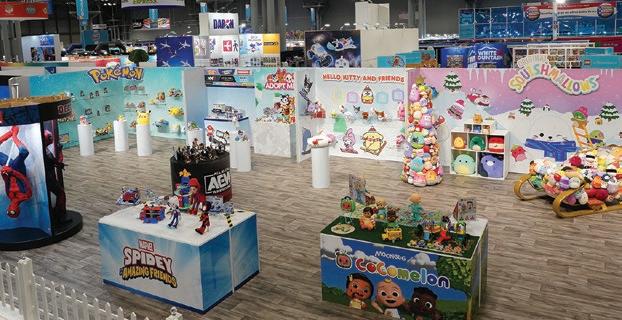
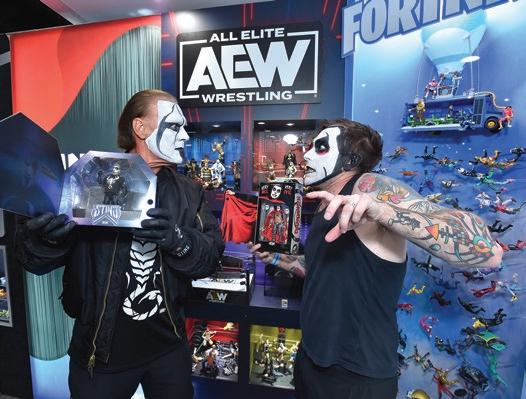
booth size, staffing, furniture rentals and anticipated traffic—the average cost to build and operate a 400-square-foot exhibitor booth can quickly surpass US$100,000, according to Chicago-based events management company EDE Corporation. So careful consideration is the order of the day.
Old dogs up to new tricks
From an exhibitor’s perspective, major toycos such as Hasbro and Jazwares view trade shows as critical parts of their businesses, especially as they move into new product categories and global markets.
Jazwares plans to expand its 2024 event calendar by 10% compared to last year, and is in the process of evaluating which new shows will best complement its planned rollouts of licensed action figures and costume play products based on Crunchyroll’s anime brands. Meanwhile, Comic-Cons, Toy Fairs and preview events are the company’s go-to solution for shoring up new retail business.
“Roughly 50% of Jazwares’ global events budget is allocated to trade shows,” says Nissa Benjamin, VP of global events.
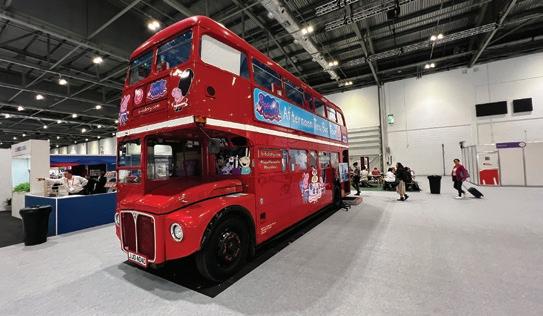

“And our budget has increased with the number of shows that have come back post-pandemic.”
But even with a reputable brand name and stacked licensed portfolio, it can still be difficult to stand out from the crowd at an event like Toy Fair. Last September, more than 1,000 companies showcased products at this show held in New York’s Jacob Javits Convention Center, which boasts an exhibit space that’s roughly the size of eight football fields.
Many companies are finding that the solution to this challenge lies in forgoing the encased fortress-style booth of yore in favor of creating an open-facing booth that showcases priority franchises in fun ways and creates a more welcoming atmosphere. This change in booth design has been strongly encouraged by trade show organizers, including The Toy Association, which mandates that exhibitors make at least 20% of their aisle-facing space a display for new products in an effort to improve guest engagement.
“This requires a huge runway to get everything right, so we typically start the overall process at least six months in advance,” says
Hasbro’s president of toys, licensing and entertainment, Tim Kilpin. “However, the final production stage to bring our vision to life comes together much quicker, and can often be done in just a matter of weeks.”
Hasbro has constructed several buzzworthy attractions for its booths lately, including a Dungeons & Dragons tavern that tours Toy Fair and Licensing Expo, and a Peppa Pig-branded café and party bus for Brand Licensing Europe. Kilpin says these additions were great tools for introducing attendees to the brands, and they also served as highly visible meeting points for connecting easily with retailers and licensees.
One way Hasbro extends the life of trade show assets is by rarely sending them to shows abroad. Shipping costs have risen by 150% since December 2023 due to conflicts and disruptions in the Red Sea, according to Jerusalem-based logistics company Freightos. And for Hasbro, that means the smarter move is to fabricate its international event booths with local partners in each territory— not only does this make each design unique to specific shows, but the builders also know


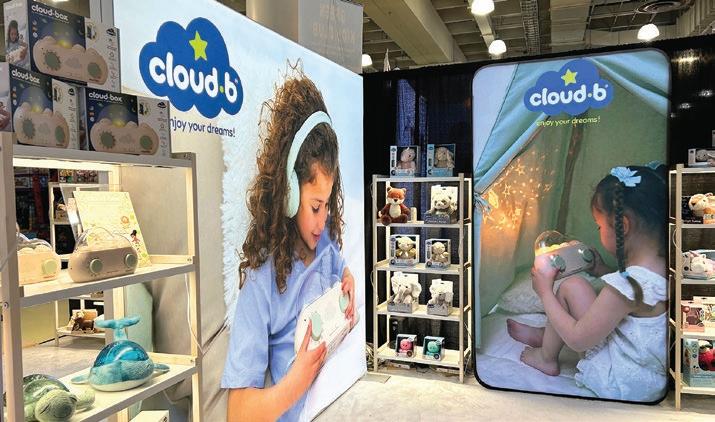
how to repurpose or dispose of assets once they’re broken down.
Like Hasbro, Jazwares is also leveraging its brand portfolio to elevate trade show booth designs. Featuring a wide range of interactive elements, recent executions include Squishmallows crane games and swings that travel from event to event in the US, plus a large bank vault that opens to reveal upcoming products about to drop on the toyco’s e-commerce site.
Benjamin notes that adding these activities allows both fans and buyers to interact directly with the brands in a meaningful way, while the design plan’s many modular elements make it possible for the team to reuse these assets and quickly reconfigure them for other B2B or consumer-facing shows.
Underdogs on the come-up
Major toycos may eat up the lion’s share of premium floor space at a trade show, but
that doesn’t mean that emerging companies can’t steal eyes away from them for a lot less money. For reference, EDE estimates that booths smaller than 400 square feet will cost approximately US$300 per square foot to design and fabricate.
Last year’s Toy Fair was a critical event for Vancouver-based PJM Distributions, which expanded from only selling baby items into licensed toys after the pandemic.
For PJM’s sales and marketing director Thomas Deumier, hospitality management is the key to landing big orders at events. “First impressions mean everything,” he says. “Whether it’s allowing guests to touch the products, changing up what they hear, or adding new visual elements to the booth—all of these things are very important because marketing is about engaging the senses.”
In an effort to cut costs and retain its position as an appealing distributor to retailers, PJM’s internal creative team designs all of the
graphics for the toyco’s booths in house, and also constructs flooring and lightboxes to make products pop while on display. And it’s all tied together by creating a music playlist thematic to the products they showcase, such as using lullabies and soothing music to create the atmosphere of a toddler’s bedtime experience.
While it’s common for major toycos to work with local partners to build their booths on the ground where each event takes place, Deumier says companies like PJM that exclusively tour the US are better served building their assets from scratch and storing them in warehouses—saving thousands of dollars in resources at each show in the process.
These fixtures add a personal touch to the booth that can’t be replicated or ordered by other toycos, he adds. And this speaks volumes to clients about the company’s passion for its licensed brands.
As a result, PJM scored deals with major retailers including Barnes & Noble and several specialty stores across North America last year as a direct result of attending shows such as Toy Fair (New York), ABC Kids Expo (Las Vegas) and ASTRA Marketplace (St. Louis).
At Toy Fair 2023, Florida-based doll manufacturer The Dr. Lisa Company saved money by choosing to locate its booth—featuring a wide range of diverse and inclusive dolls—in the back corner of Javits’s top floor. While not a particularly desirable spot, this freed up enough budget for the team to purchase a wide banner that was front and center at the show’s lower-floor entrance for the entire four-day event.
And this added visibility in a space where people naturally gathered to find each other for scheduled meetings yielded tons of foot traffic to Dr. Lisa’s booth, says EVP of sales, licensing and partnerships Lee Clemons.
To welcome folks who made the trek, the company invested the rest of its budget in bright magenta-and-pink walls to make the booth as easy as possible to find, and three inches of extra floor padding to keep guests comfortable while on their feet.
“It’s been [more than] six months since Toy Fair, and we’re still busy—there’s no question it was a success,” says Clemons.
“The immediate impact was roughly a 2% to 3% gain to our consumer base. And we will see this increase to 6% to 8% as we finalize deals with retail partners for spring 2024 orders.”
PJM Distributions uses music, imagery and lighting to create a dreamy atmosphere in its booth that showcases Cloud.b’s range of toddler plush
Nickelodeon Consumer Insights explores how kids TV can normalize mental health journeys.
BY: COLLEEN RUSSO JOHNSON, PhD, MAKEDA MAYS GREEN & RON GERACI
here’s no question that today’s youth are experiencing a mental health crisis. In April 2023, US Surgeon General Dr. Vivek Murthy issued an advisory about the imperative to address the vulnerable state of mental health in children, declaring it “the defining public health crisis of our time” in a livestream with US Senator Bernie Sanders on X (formerly Twitter).
Nickelodeon’s new Wellness Matters study explores the state of childhood mental health and the strategic approaches content creators can take to play a part in fostering their emotional well-being. We surveyed 700 six- to 12-year-olds, 700 of their parents and 102 mental health professionals throughout the US in November/December 2023, and our findings suggest that kids need help understanding the importance of prioritizing mental health.
While more than three-quarters of our kids sample said it’s very important to take care of their physical health, less than twothirds prioritized their mental health to the same degree.
Parents and mental health professionals, on the other hand, are more acutely aware of the importance of mental wellness. When asked about children in general, 88% of parents are at least slightly concerned about kids’ mental
health, with more than a quarter being very or extremely worried.
Mental health professionals say six- to 12-year-olds are most commonly dealing with challenges related to anxiety, peer relationships, emotional regulation, bullying and stress from parental divorce/separation. And other leading factors contributing to these struggles include social media, housing and food insecurity, and after-effects of the pandemic.
To deal with the stressors of day-to-day life, kids today are employing a wide range of coping mechanisms. Their top strategy for dealing with stress is talking to or snuggling with a parent, but their next go-to is watching a favorite TV show or movie. (And parents rate this as the fifth most-helpful tool for helping their child to calm down.)
Given this fact, content creators have a unique opportunity—as well as a responsibility—to help inspire kids to prioritize their mental well-being through storytelling.
Over the years, there have been some terrific examples of entertainment titles that discuss topics related to youth mental health, spreading critical awareness of the issues at play and the resources that are available. (Bluey, SpongeBob SquarePants and Inside Out were
highlighted in our study as prime examples of shows and movies that talk about feelings.)
However, messages promoting mental well-being don’t have to be limited to scenes that are explicitly about mental health. There are clear opportunities for both active and passive portrayals that foster mental wellness, and both can be excellent, depending on the content.
Arguably, passive portrayals can be incorporated into any content dealing with any topic—whether or not messaging around mental health is an explicit goal. These additions cost the storyline nothing, and they help to subtly normalize mental well-being and create a powerful feeling-seen moment for the audience.
For example, a passive portrayal could be a character saying, “I’m talking to my therapist after school, but I can hang out afterwards.” The script could have just as easily said “dentist appointment” or “basketball practice” and nothing about the scene would have changed. But mentioning a therapy appointment subtly normalizes seeing a mental health professional, and it’s even stronger if it comes from a character who you wouldn’t expect to be in therapy.
Meanwhile, active portrayals are great for explicitly calling out messaging around mental
health and well-being, and they naturally fit into content in relatable and authentic ways. An example could involve actually showing a child in a therapy session.
It’s also important to understand how kids want to see these coping strategies represented. When we asked them to identify what kinds of on-screen content would help them feel better when they’re sad or stressed, kids’ number-one request was for scenes showing open communication with parents and friends. (And they especially want to see boys talking with each other about their feelings and struggles.)
Keep in mind that these conversations do not need to be perfect. In fact, showing a parent struggling and maybe not getting it right the first time—but at least trying to engage in a meaningful discussion—could be more relatable and very powerful.
Along with open communication, kids want to see creative coping strategies modeled in the shows and movies they watch. As one 10-year-old girl said, “In my TV show, there’d be a magic journal that helps kids understand their feelings. They’d write in it and get cool advice! There’d be fun adventures where they learn it’s OK to feel sad or stressed, and also ways to feel better, like playing or drawing.”
Interestingly, kids emphasized that they don’t just want to see major mental health crises on screen. They also want to see the real, everyday problems that most kids are navigating. And they’d appreciate scenes that normalize low feelings as a reminder that everyone struggles, with resolutions that focus more on the journey through these hard days than on coming out on the other side. As one nine-year-old girl said, “Have a show end where everything isn’t OK. Stop making everything a fairy tale. Bad things happen, and you have to deal with it.”
Perhaps not surprisingly, kids expressed some interest in watching portrayals of bullying—and importantly, how to cope with this experience and overcome it. Moreover, kids are keen to see supportive teachers they can turn to as trusted advisors and advocates.
Showing what therapy looks like is another aspirational request, and Black children we surveyed were more than twice as interested in seeing this on screen. Notably, mental health professionals also stressed the importance of
Kids openly communicating with parents and friends.
Normalize that everyone feels low sometimes.
There are lots of ways to introduce and normalize it.
Modeling behavior so kids have a variety of options.
Portray how to cope with and overcome it.
Hugs are a top coping strategy for kids.
media making it mainstream and admirable to go to a therapist or talk about feelings on a regular basis, instead of waiting until a crisis event transpires to seek help.
Kids say content creators should incorporate hugs from parents (which is their top coping strategy, along with open communication). Modeling this behavior is also beneficial for parents, who may not have grown up in households that demonstrated affection in this kind of physical way.
Finally, and very importantly, kids want humor (where appropriate, of course). Comedy is a great way to normalize serious topics in a relatable and engaging way, so lean into the laughs while still respecting the sensitivity of some situations.
Clearly, mental well-being is a journey. And content creators have a unique opportunity to help kids effectively cope with challenges in their daily lives. From interstitials to full series, there are rich ways to take a proactive approach and make mental wellness an ongoing deliverable.
How to deal with them, not just major struggles.
Model leaders who care about kids’ feelings.
It’s an effective tool to soften heavy situations.
Source: Nickelodeon
There is no need to isolate this mission to Mental Health Awareness Month in May. And remember, progress does not require perfection. Some messaging around mental well-being is better than none at all.
COLLEEN RUSSO JOHNSON is a developmental psychologist with expertise in children’s technology and media. She is currently working at Nickelodeon as a VP of digital and cultural consumer insights.
MAKEDA MAYS GREEN is senior vice president of digital and cultural consumer insights at Nickelodeon, where she evaluates the most effective ways to reach diverse target audiences through innovative research methodologies across platforms.
RON GERACI is currently EVP of multiplatform analytics and insights at Nickelodeon, where he leads a team of researchers specializing in media behavior and attitudes among kids and families.
Greg Harman made his career innovating at animation studios. Now, his free AI software might help save creators a ton of time and cash.
BY: RYAN TUCHOW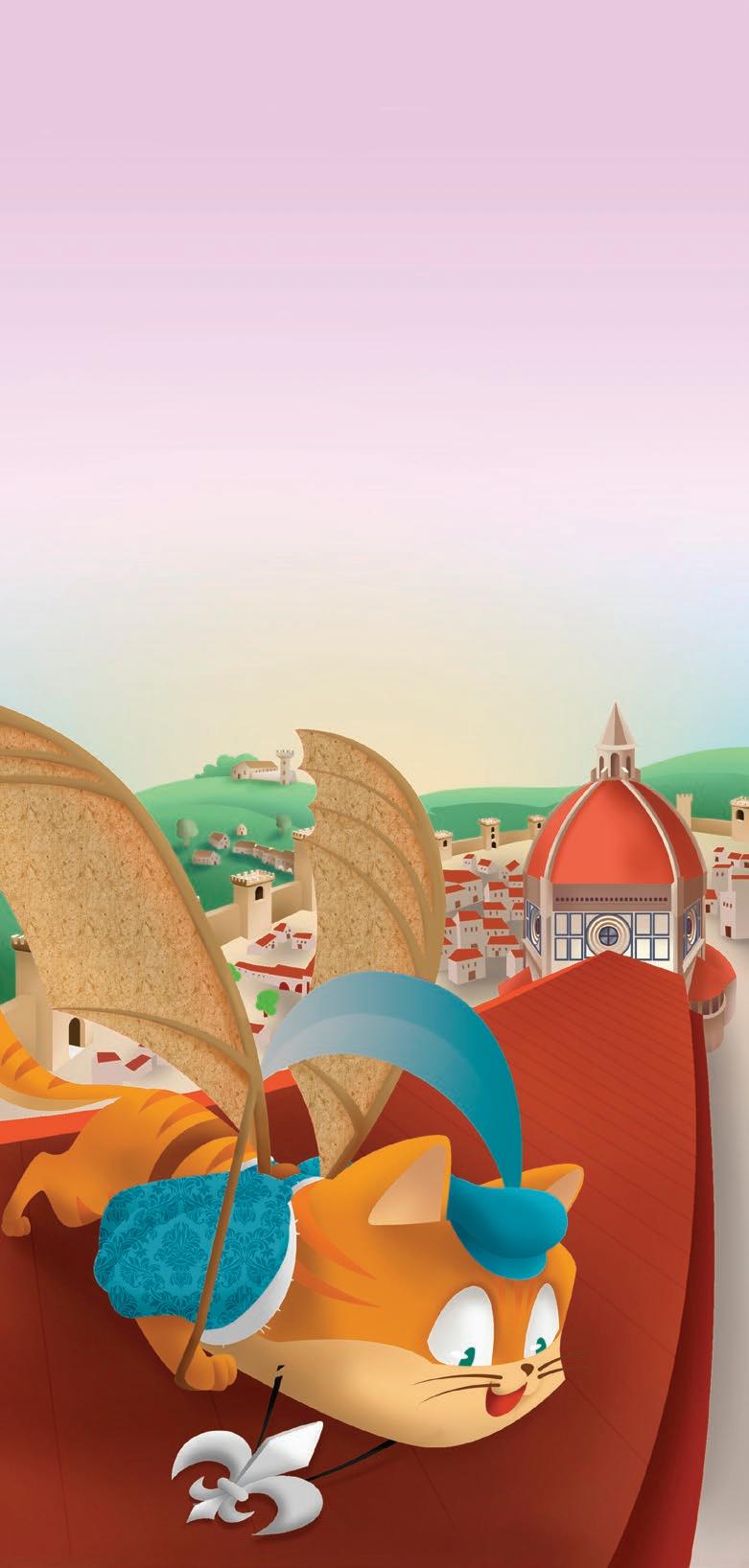
magine being able to visualize your live-action or animated stories based on a PDF script, and immediately spot problem areas and red flags before production even starts. That’s the promise of Scriptsee, a new free-for-now software product from New Zealand’s Motion Tech Lab, which has raised around US$900,000 in pre-seed funding. (There will be a fee to license the software upon its official release.)
Scriptsee uses natural language processing (a type of AI that focuses on teaching computers to understand language) to analyze a script, predict how many shots are required for scenes, and break down the number of characters, props and effects needed in each one. It also highlights scenes that are more complex. (The software works with both live action and animation, but doesn’t yet have the capacity to handle unscripted projects without a screenplay.)
Creatives can gain a whole new level of understanding of their projects by being able to visualize a script beforehand to determine how many times a character shows up, which scenes have the most characters (and would therefore take the most time to animate), and what the emotional tone of the story is, says Greg Harman, Motion Tech Lab’s CEO and co-founder.
And more importantly, this bird’s-eye view allows producers to make changes in pre-production and development before committing to production, when they would become far more costly—something that’s becoming more and more critical as budgets continue to get squeezed.
While the industry has understandable concerns around AI, Harman underlines that Scriptsee doesn’t do any creation; it’s solely an analysis tool. “We don’t write the story for you, and we don’t tell you what to do. We highlight the ways your script can be improved—it’s battle-planning for the production.”
One of Scriptsee’s clients is writer and producer Robert Seal (author of a kids book called Three Wise Animals from Guardian Angel Publishing), who used the software as he was developing a US$15-million CG-animated feature film for six- to 11-year-olds called The Florentine Cats
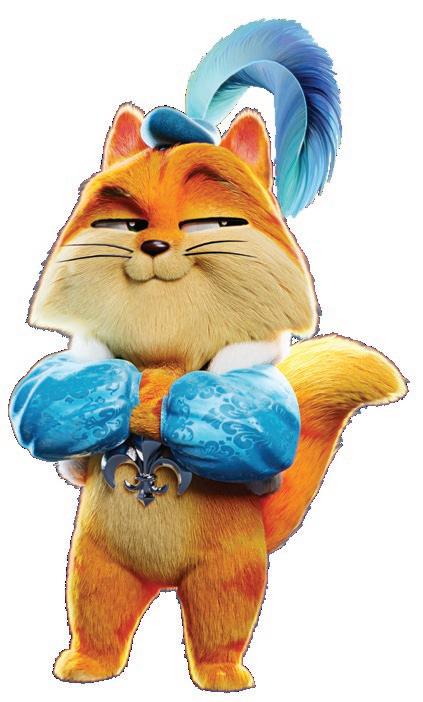
Scriptsee’s metrics for The Florentine Cats led to a greater emphasis on main characters and a third act that makes a bang with special effects

Seal says the software helped him make significant improvements to keep the project on budget. One of the biggest red flags Scriptsee pinpointed was that his script had “way more” locations and scenes than a typical animated film. It then helped him identify which locations could be merged or eliminated. Similarly, he found that some of his minor characters didn’t interact with main characters very often, so there were opportunities to condense their screen time.
“I was able to see right away from the visual metrics the improvements in the draft-to-draft comparisons, which made for a better writing process overall,” says Seal. “For instance, I was able to analyze the use of special effects in the film and find ways to reduce them in the first two acts and maximize them for the third act—which was useful for the estimated budget.”
As a creative, Seal says he’d like to see a database of other films added to the software to allow him to compare his own metrics with other projects, and maybe an auto-budgeting feature that would calculate costs based on the film’s length and complexity. He’d also find it helpful if Scriptsee was available in languages other than English so he could easily share its insights with international partners.
We don’t write the story for you…it’s battle-planning for the production.
—Greg Harman, Motion Tech Lab
Scriptsee has received similar feedback from 200-plus trialing clients—ranging from independent creatives to medium- and large-sized studios—who have been using the tech since Motion Tech Lab launched it at MIPCOM in October. And all of this feedback has been added to the project’s roadmap.
It helps that Harman has a tech and animation background—he was previously a CTO for Karactaz Animation (later Mechanic Animation), which produced 18 shows for Marvel Animation Studio (Marvel’s Guardians of the Galaxy series) before the pandemic.
The Motion Tech team has been busy onboarding clients in recent months, and all that additional data is helping to improve the software. While the tech is predictive, it’s not yet 100% accurate—it will currently give producers a solid approximation of the numbers—but Harman says the product’s accuracy will improve over time.
He foresees a time when a company might plug its entire back-catalogue into Scriptsee to get insights for multiple seasons—something that would be especially valuable for new writers coming onto the crew. Having a breakdown of a show’s characters and plots, and being able to search through them on demand, would save a writer from having to watch an entire series to catch up, he explains.
By this time next year, the goal is to have more data and benchmarks for the team to share. Scriptsee might even be able to analyze books, or help commissioning bodies filter pitches to make sure they meet specific criteria. The sky’s the limit.
Right now, Harman just wants producers to try it out. “If you can start with a good story, you set yourself up for success,” he says. “Development execs and writers can look at their projects through a different lens, and seeing all this data can empower decision-makers.”
Technology is creating new ways to reach non-hearing audiences, and JAM Media’s latest innovation in this space engages kids through mocap, real-time animation and AI.
BY: RYAN TUCHOW
ids are less engaged when they don’t see or hear themselves on screen. So naturally, that’s a barrier for millions of hardof-hearing children around the world. But Ireland’s JAM Media is looking to change all of that with a new motion-capture project called Zaki Signs.
The studio is combining mocap, AI machine learning and Epic Games’ Unreal Engine animation tool to create—in real time—an animated character who provides American Sign Language (ASL) content interpretation.
Traditionally, adapting kids content for deaf viewers has either meant putting captions on screen (not super-helpful for younger children who can’t read yet) or a picture-in-picture setup with an ASL interpreter signing in a corner. And YouTube creators have adopted similar approaches.
But using adult interpreters feels like more of a barrier than a gateway when it comes to engaging kids, says studio owner John Rice.
And that’s why JAM decided to focus on turning the human performer into an animated character (named Zaki) on screen.
JAM wants to have Zaki Signs ready to go by end of year, so it’s busy tweaking character designs to be sure the program can capture all the necessary nuances in facial expressions. Ultimately, the studio hopes to develop a product that can interpret in any sign language, not just ASL—and that’s critical, given that there are more than 70 million deaf people worldwide who use 200plus sign languages, according to the World Federation of the Deaf.
But the number of viewers who would benefit from Zaki is potentially much higher
if you also factor in kids with serious hearing loss—around 34 million globally, according to the World Health Organization.
JAM has already entertained significant interest from broadcasters and producers with large back catalogues of programming they’d like to make more accessible for this audience. “The reaction to Zaki so far has been out of this world,” says Rice. “We want to make it easy for producers to remove barriers to their content and create a bridge to reach deaf viewers.”
This isn’t the first time motion-capture technology has been leveraged for this purpose in recent years. Finnish pubcaster YLE experimented with it in 2019, and France’s MocapLab is currently tackling the challenge of enhancing the precision of mocap sign language. However, the task is especially difficult,



Zaki demonstrates some common phrases in American Sign Language. HOW ARE YOU?




given that signing requires complex finger movements and full facial expressiveness.
But the tech that underpins Zaki is now so well-developed that JAM can produce high-quality work in real time—and it has to be done in real time if it’s going to be commercially viable, says Rice. With JAM’s tools, a company can add Zaki to a 52 x 11-minute series in that same number of minutes. And the plan is to keep fine-tuning so that by the time Zaki launches, there won’t even be any need for animation cleanup work when it’s integrated.
Clients can also customize how the Zaki character appears, whether it’s in a picturein-picture box or as a close-cropped image right on top of what’s unfolding on screen.
Working with JAM is proportional, depending on the reach and scope of the
project, but generally costs about 10% to 20% more than hiring a sign language interpreter alone (typically US$100 an hour or more). With Zaki, clients still hire the interpreter, but JAM provides the haptic gloves used in motion capture to render the human performer’s movements into animation, guides the interpreter to perform the movements and expressions that Zaki will overlay, films this, and then animates it using the Zaki character.
On the other side of the coin, JAM only needs an iPhone to capture the video instead of expensive cameras, and the goal is to eventually offer Zaki at the same cost that most signing companies charge for just the human interpreter.
Zaki’s engagement potential goes beyond the ASL-signing character’s ability to break
down barriers—he could also be a buddy. Zaki will be able to watch TV with a child and react to the content on screen, making them feel like he’s part of their experience. And he might even spark an interest in learning to sign among hearing audiences, or come to life in his own branded content and consumer products.
An early backer of this technology is Screen Ireland, which gave JAM a portion of the US$432,000 in funding that it handed out last December to projects exploring new ways of using the tech to tell stories (enough to cover about 50% of the project’s budget at its pilot stage).
But JAM hopes to find additional development funding from NGOs and organizations dedicated to people who are deaf and hard of hearing, says Rice.


here has been a major shift in how and where kids are seeking and finding their entertainment over the past decade. According to recent surveys, they’re spending almost two hours a day watching content on YouTube. Surprised? You shouldn’t be. YouTube and TikTok have become entrenched as primary entertainment platforms for kids—and it’s starting to have a major impact in the consumer products and toy markets. Of course, this isn’t the end of the line for licensing programs based on TV shows and films, but there’s more appetite than ever for an emerging and powerful influencer class. And this new group of DIY creators—armed with digital cameras, an uncanny connection to their audience and a penchant for constant content creation—is quickly ascending to the top of the food chain.
How toycos are tapping into the power of online creators.BY: GARY RUSAK

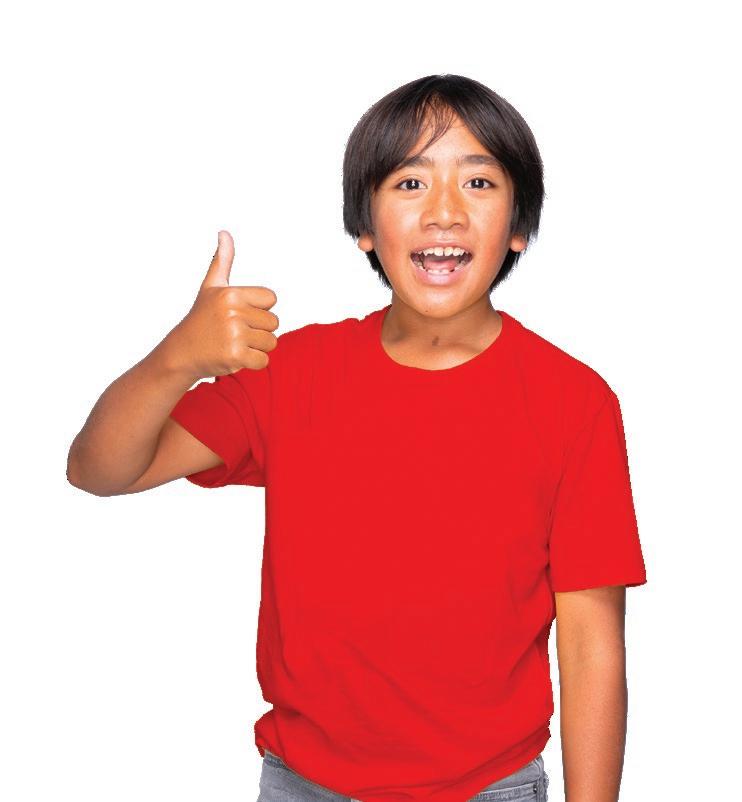
“These creators have become a foundational part of the entertainment landscape,” says Ronnie Frankowski, global president of Australia-based Moose Toys. “They are now the predominant brands, like movies and TV shows used to be. There is just no denying that anymore.”
“They have become a new version of superheroes,” adds Manuel Torres Port, head of global consumer products for pocket.watch, whose current roster of 51 online creators have cumulatively driven a hard-to-fathom 661 billion lifetime views on YouTube.
There’s no doubt that the licensing landscape has changed drastically of late. But the key questions for licensees remain the same: What does connecting with an audience look like? What connects in a way that will drive sales?
The tipping point may have been the emergence of YouTube creator Ryan Kaji and his successful Ryan’s World consumer products imprint about five years ago. The 12-year-old’s current net worth is estimated to be north of US$100 million, and his channel has driven more than US$1 billion in retail sales, according to pocket.watch.
The company started its Ryan’s World program with signature mystery toys at Walmart in 2018—the first-ever creator-branded toys to hit the toy aisle. A robust rollout followed in many other categories, including publishing, apparel, accessories, consumer goods (everything from Kellogg's cereal, to Colgate toothbrushes and toothpaste), Skechers sneakers and branded Carl’s Jr. kids meals. Ryan's World products are now available globally, backed by distribution of the brand’s live-action and animated series on 45 platforms in more than 80 countries.


Pocket.watch was an early adopter in this space, brokering a prescient deal between Ryan’s World and California-based Bonkers Toys in 2018. Fast-forward to today, and the company is currently readying programs for Toys and Colors Kaleidoscope City (one of the most-viewed creators in the world, with 53 million followers and 59 billion lifetime views on YouTube) and Dan Rhodes, the platform’s most-viewed magician account.
“We definitely look at different lines of metrics now,” says Torres Port. But he cautions against making judgments based on raw viewing data on any one platform. “You have to look at the viewership, the [number] of subscribers, the fanbase, how engaged people are and completion rates,” he explains, adding that there is real value in delving into what aspects of the content can both create interactions and be easily transformed into a product. “You want to be able to understand what can be developed and converted into a form of play or a gadget.”
With these factors in mind, Toronto’s Spin Master recently inked a deal with YouTube sensation Ms. Rachel to develop a range of 12 to 15 SKUs that will include plush, puzzles and playsets, as well as a GUND collaboration with the company’s newly acquired Melissa & Doug vertical.
While Ms. Rachel’s YouTube page certainly boasts a large and engaged fanbase—8.2 million YouTube subscribers, 50 million-plus unique monthly views and 5.6 billion lifetime views—there were
other key metrics indicating that the channel’s popularity might translate into successful product lines at retail, says Doug Wadleigh, head of global toy brands for Spin Master.
“We track ‘failed search’,” he explains. “We can go to e-commerce sites and find out how many times things like ‘Ms. Rachel toys’ or ‘Ms. Rachel plush’ were entered but returned no results.” The failed search numbers were eye-opening—as were the number of unlicensed DIY goods populating sites like Pinterest and Etsy. Unlicensed Ms. Rachel items on these platforms range from crochet dolls to infant onesies and even Bingo cards.
“Ms. Rachel ticked all the boxes we look at before signing a deal,” Wadleigh sums up. “She has a big, engaged audience, lots of failed merchandise searches, and unmet demand shown through many different homespun products.”
While the structure of deals struck with traditional IP owners and online influencers are virtually the same, there is one major difference—influencers are real people, says Wadleigh. And in a highly scrutinized media universe, they can very quickly fall out of favor
Spin Master is fast-tracking development of a Ms. Rachel line of products that will include plush, puzzles and playsets
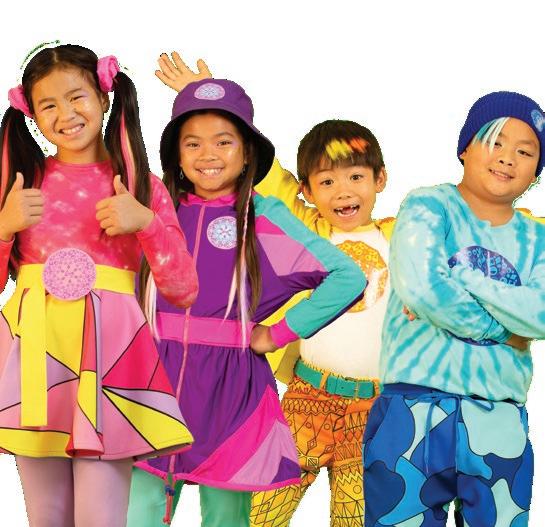
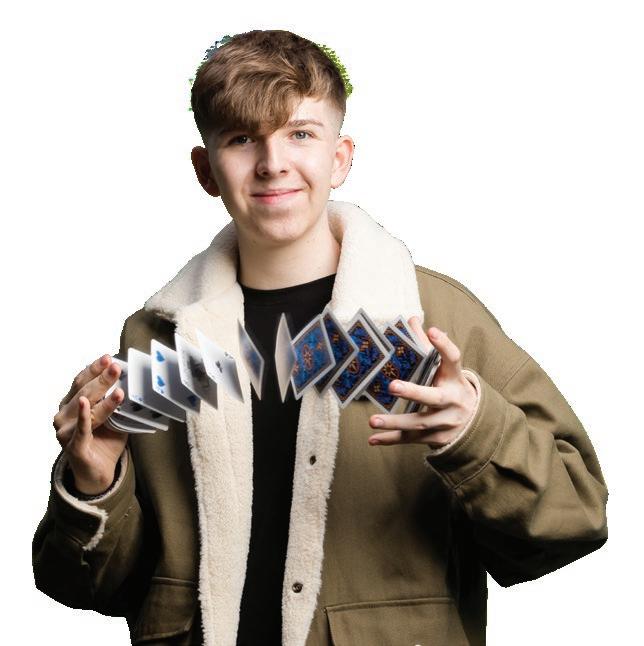
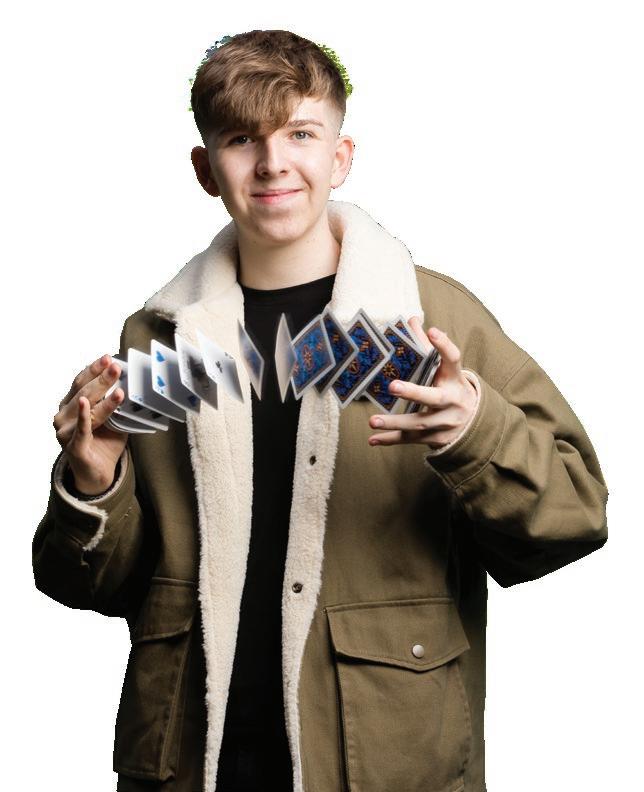
with an all-too-human misstep. While there are no foolproof ways to mitigate this risk, toycos now regularly employ focused vetting to identify any potential pitfalls.
“We are extraordinarily proud of our very strong and meticulous screening process,” says Torres Port. “At the outset of any deal, we have very strong guidelines to make sure that kids’ safety comes first. Also, we must be absolutely aligned with the values of the creator.” Some of the company’s vetting methods include multiple-person interviews, relationship-building and a survey of social media.
Moose Toys recently announced a new deal with top-tier influencer MrBeast—who currently boasts more than 230 million YouTube subscribers and upwards of 1.8 billion monthly views—and will start rolling out a range of unspecified products later this year. Knowing that intense scrutiny comes hand in hand with an influencer’s popularity, Moose began the vetting process years before the agreement was inked, says Frankowski.
“You have to build trust and rapport,” he notes. “We spent a long time building a personal and professional relationship.” Due diligence takes time and patience, but it’s critical.
Another key component of influencer deals is the speed with which SKUs must come to market. Most influencers post some form of new content every few days, and this constant creation stokes the expectations of their fanbase. The yen for near-instant gratification exerts pressure on the entire consumer products process, from development to retail distribution.
As an example of how quickly things develop, Moose Toys announced the deal with MrBeast in January—late in the sell-in cycle—and will have products on shelves by August, much faster than the typical 18- to 24-month turnaround. With the help of eager retailers and manufacturing efficiencies, the entire process was streamlined and accelerated. “Keeping up with the content, which moves so quickly, is the exciting part for us,” says Frankowski.
“It matches the connection we have with MrBeast because we are both agile and efficient innovators at heart.”
Spin Master’s campaign for Ms. Rachel is another case of a fasttracked program that reflects the speed of the channel’s content creation cycle and the expectations of an eager fanbase. “It happened fast,” says Wadleigh. “We entered into our initial agreement late in the first half of 2023, and we turned around the product concepts and designs at breakneck speed to have products on the shelf by Q4 2024.” And unlike a program tied to a movie, TV series or publishing franchise, there was a fever pitch to meet substantially shortened timelines. “Because of her popularity, we expedited a lot of our normal processes just to get stuff out there.”
In the end, finding new IPs on platforms like YouTube and TikTok represents more of an evolution than a revolution. As licensees seek out the next Ryan’s World, they must be prepared to consider different metrics and work to new timelines, but the process remains fundamentally the same. It’s just that the universe has gotten a whole lot bigger.
Toyco competitors are setting aside their differences to jointly develop new collaborations that feature their most beloved brands.
BY: COLE WATSON
lowing toy industry sales combined with the impact of Hollywood’s recent strikes on commissions and productions have left toycos hungry for new growth opportunities. While some are tapping into trending categories like gaming and location-based entertainment to expand their brands, others are looking to flip the industry on its head by turning tough competitors into close allies through co-branding.
This hot business strategy revolves around limited-time collaborations that marry the strengths and market appeal of two well-known brands to create exciting new merch opportunities and drive sales for all parties involved.
Though some brands have been at it for years, the co-branding movement is just starting to take off in the toy sector. But it’s an approach that has been routinely leveraged in the restaurant, tech, fashion and music industries to bolster marketing efforts and increase brand awareness. Over the past several years alone, Taco Bell has hooked up with Doritos to launch new menu items, Uber has partnered with Spotify to create playlists for commuters, and

Apple has teamed up with Nike to launch new loops and sport bands for the Apple Watch.
In the toy space, one of last year’s highest-profile and least-expected collabs was between two longtime rivals. “I don’t think anyone ever thought that Hasbro and Mattel could work together as partners,” says Casey Collins, Hasbro’s president of licensed consumer products, adding: “It took a while even for the lawyers to figure out how to get two people from each company in a room together.”
However, the partnership blossomed pretty quickly, with Hasbro manufacturing a Barbie-branded edition of Monopoly in Q3 2023, and Mattel following suit earlier this year with a range of Transformers UNO games and Hot Wheels vehicles. Collins says this was a great starting point because each of these properties is a top-selling brand globally in their respective categories.
Hasbro has actually been building its co-branding strategy over the last six years, according to Collins. The company got used to the temperature of these waters by licensing brands such as Lite Brite (BasicFun!) and Play-Doh (Creative Kids) to smaller toy manufacturers,
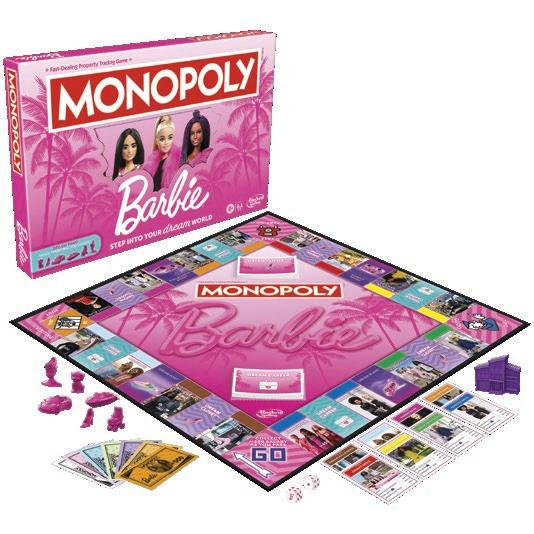
eventually working up the ladder to bigger toycos like The LEGO Group and Moose Toys.
“Co-branding strategies are becoming necessary as the media market becomes more fragmented,” says Collins. “It’s getting difficult to reach new consumers, break through in different ways, expand your demographics and broaden your reach.”
He notes that Hasbro’s most successful co-branded product to date came from last year’s collaboration with Middle-earth Enterprises on a Lord of the Rings: Tales of Middle-earth booster set for Hasbro’s iconic Magic: The Gathering trading card game. After just two months in the market, the pack was Magic’s second best-selling product of all time, generating more than US$200 million in revenue.
“When we [introduced] the Lord of the Rings set, there were a lot of Magic purists who scoffed at it,” recalls Collins. “They told us, ‘This is jumping the shark, and you guys are going too far.’ But [it] brought in a whole new audience of LOTR fans who had never played Magic before. It’s a great recruitment tool.”
“Anyone who tries to extend a brand outside of its natural positioning can end up turning off loyal consumers if they sense the co-brand isn’t genuine,” says Runken. “It’s paramount to keep true to the brand’s originality in all mediums and forms.”
While it’s natural for a brand with global appeal like Squishmallows to have potential collaborators knocking at the door constantly, Jazwares has decided to limit its co-branding deals to a select few each year in order to keep each one special and ensure that the Squishmallows fandom’s spending power isn’t diminished by too many products in the mix.
For a partnership to come together cohesively, both brands need to benefit, adds Runken. This process starts with Jazwares researching and evaluating potential partners to determine if any of their brands have similar scale or global appeal.

Hasbro is looking to emulate this success next year with AAA-budget game developers Bethesda Softworks and Ubisoft, with which it’s developing new Magic sets based on the Fallout (Bethesda) and Assassin’s Creed (Ubisoft) franchises.
Another big co-branding player is Jazwares with its Squishmallows plush brand. In the past two years alone, the toyco has engaged in a wide range of fan-driven collaborations, including McDonald’s Happy Meals, a new edition of Hasbro’s classic mystery game Clue, and a Pokémon-branded collection in the core product line.
Co-branding is a great opportunity for toycos in general, says Jazwares brand and marketing EVP Gerhard Runken, because the products they yield can act as a bridge between fandoms in order to cross-pollinate audiences. But it’s important that the brands share similar values, or you risk killing the golden goose.
Jazwares has entered into a series of toyco collabs for its Squishmallows brand, including Pokémon and the classic

 Hasbro board game Clue
Hasbro board game Clue
In general, the toyco is looking to work with partners that are also best-in-class in their categories, and that have a strong understanding of their core consumer. Some kind of intrinsic affinity for Squishmallows is also helpful, as it makes building a new product range more collaborative.
“Ultimately, we want to partner with brands that provide the same fan and consumer experience that Squishmallows does,” says Runken.
Following a similar model, LA’s Cloudco Entertainment found its match-made-in-heaven when it partnered with lifestyle giant Sanrio this past January to create a co-branded Care Bears/Hello Kitty range. It kicked off in March with three limited-edition retail exclusives: a capsule collection of apparel and plush at Target; Hot Topic’s housewares and Loungefly bags; and accessories and stationery with Claire’s.
Within two months, the crossover had generated more than 9.2 million views on TikTok thanks to purchasers sharing their unboxing videos.
Cloudco had a calculated strategy to enhance the shopping experience for consumers, while adding more value to the collaboration, notes head of global licensing Robert Prinzo. “We’re deliberate about creating pairs that resonate with fans. For example, we matched Hello Kitty with Cheer Bear based on their popularity and distinct personalities.” And each property’s resident grouches Badtz-Maru penguin and Grumpy Bear were partnered to sulk it out together.
Outside of its deal with Sanrio, the company has also paired the Care Bears with Ripple Junction’s Grateful Dead bears for licensed t-shirts, and with Popmart’s Space Molly character for high-end collectibles. In another notable example, Cloudco capitalized on the lucrative location-based entertainment craze by opening a Baskin-Robbins/Care Bears-themed café in South Korea in 2021. It ranked as one of the ice cream retailer’s top 1,300 stores in the country last year.
Co-branding has become a cornerstone business model for Cloudco in recent years, aimed at leveraging emerging market trends and adjusting quickly to changes in consumer behavior, says Prinzo.
Each deal is structured differently depending on the scope of the collaboration. And it can take close to a year for products to launch, as both partners need time to approve each one and ensure that their brands are respected and represented fairly, adds Prinzo.
“Typically, both parties collaborate closely throughout the process and leverage their respective strengths,” he explains. “As for revenue split, it’s negotiated based on factors like brand equity, distribution channels and marketing efforts.”
Last January, Hasbro struck its second co-branding deal with The LEGO Group to bring its flagship preschool franchise Peppa Pig to life in four new LEGO Duplo construction sets.
“The first thing we had to figure out was what Peppa should look like in LEGO form,” says Matt Proulx, Hasbro’s VP of location-based entertainment. “Once LEGO got comfortable with a few designs, they shared them with us, which kickstarted all kinds of brainstorming sessions. Ultimately, LEGO led the collab because they are designing the products. But they provided our franchise team with
Cloudco Entertainment partnered with Sanrio in January to create a co-branded Care Bears/Hello Kitty range that features three limitededition retail exclusives


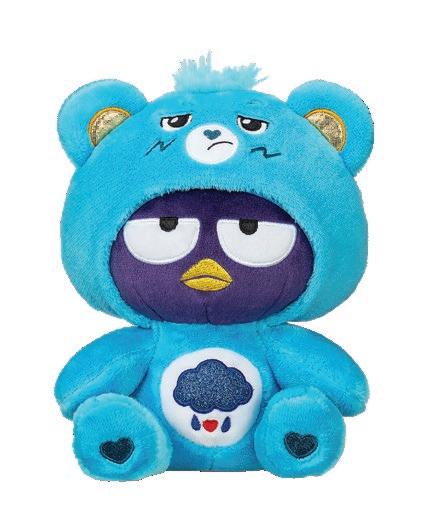

all kinds of research, data, style guides and assets, which built up our trust in what they were doing.”
New product launches are just one piece of the pie, though, and Hasbro’s partnership with LEGO is extending way beyond the toy aisle to location-based entertainment. The partners teamed up with UK-based theme park operator Merlin Entertainments to construct a dedicated Peppa Pig x LEGO Duplo play area in Billund, Denmark that opened in May, with Irish game developer StoryToys releasing a companion educational app for preschoolers in March based on that experience.
Proulx sees co-branding as a great strategy for brand managers looking to change up how they manage their portfolios in today’s market. It’s not about protecting the form factor anymore, he says.
“The market is telling us to smash these brands together in a meaningful way that delivers on the emotional needs and benefits consumers are seeking. The moment you do that, it feels phenomenal, and the results are exponentially greater than if you're trying to build it all on your own.”
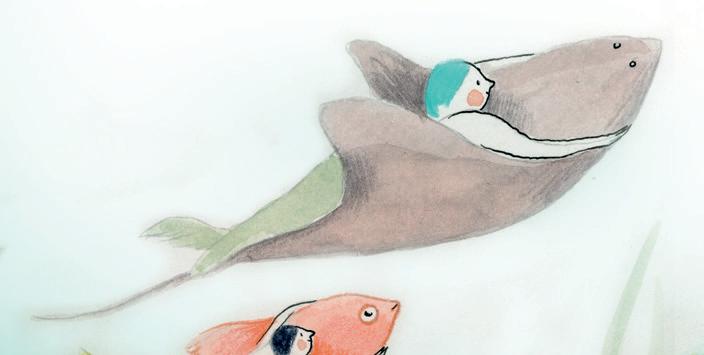

Thanks to a hard-won change in the |eligibility criteria for Eurimages’ new three-year pilot program, the second season of Interstellar Ella ended up receiving €500,000
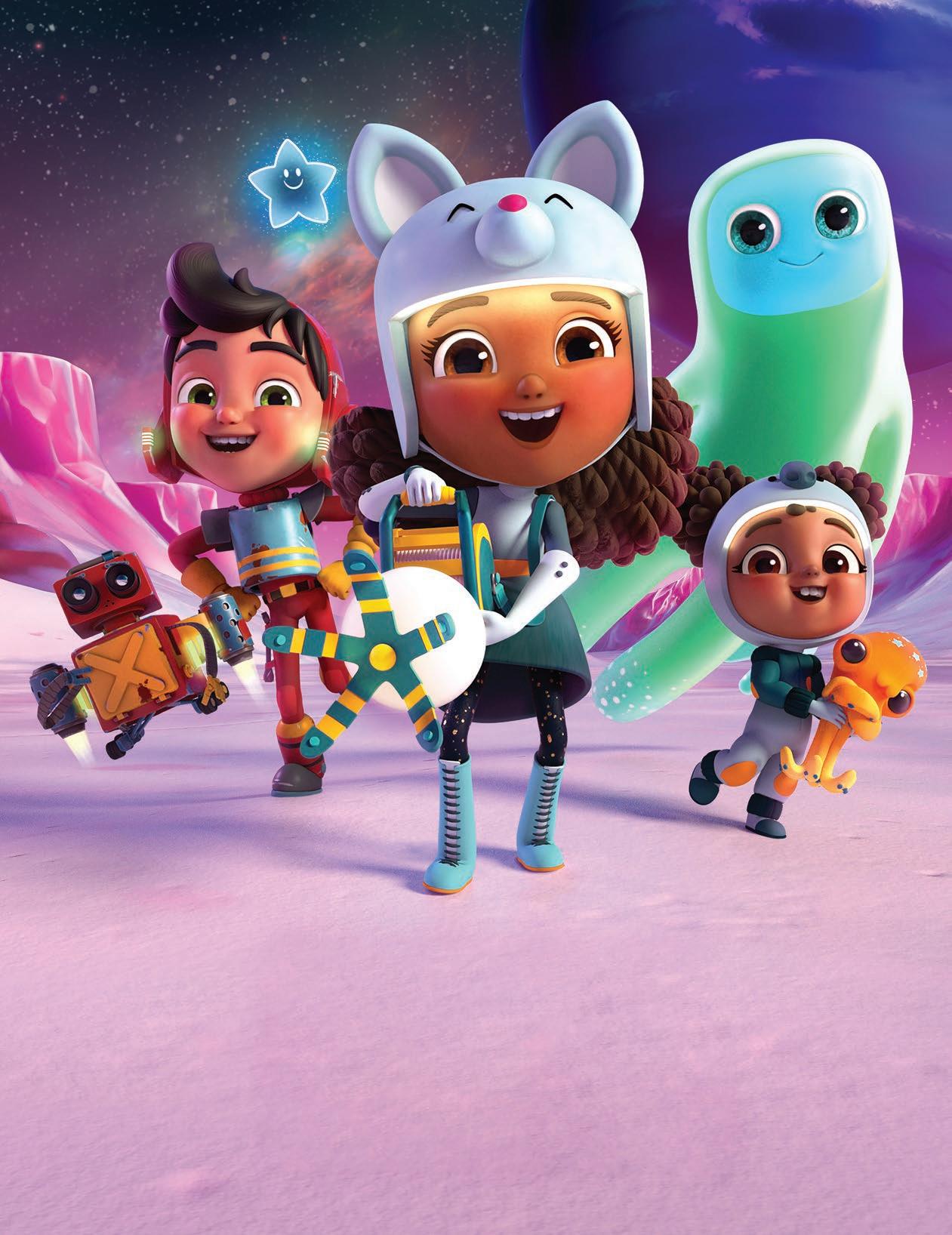 BY: JEREMY DICKSON
BY: JEREMY DICKSON
Kidscreen looks at why the kids industry is getting back to its bread and butter—the business of co-production partnerships—and what strategies make the most sense now when it comes to getting deals done. Plus, we travel far and wide to uncover some of the latest new funds!


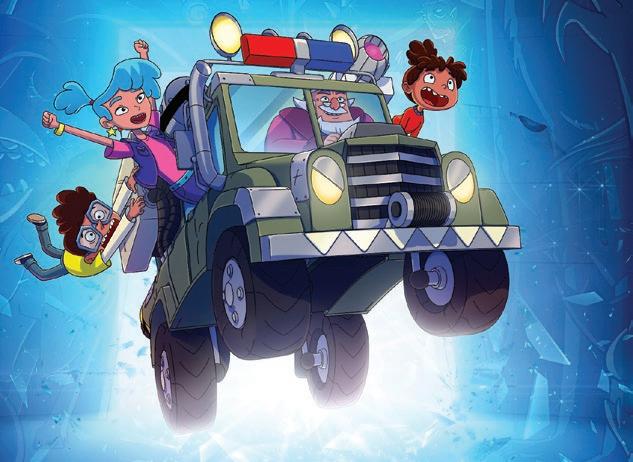
ow that the glory days of major US streamers fully funding kids TV concepts in exclusive volume deals are essentially over, the industry is recalibrating again.
The current buying drought, which isn’t expected to turn around until 2025/2026, means that getting a show financed and commissioned—a complicated puzzle at the best of times—has become the biggest challenge most producers are facing today.
Just how severe is the downturn? According to a recent report by research firm Ampere Analysis (Fundamental Industry Change & the Future of Kids Content), the total number of kids & family TV seasons ordered globally across all platforms and channels fell by around 20% last year compared to 2022, and it was one of the most-affected genres.
Ampere also found that first-run kids TV orders from US platforms and channels between 2019 and 2022 were predominantly for shows based on existing IPs, and animated commissions from Disney, Netflix, Paramount, WBD and Comcast (regardless of platform) in 2022 and 2023 were mostly renewals. Times have certainly been tough for original kids programming, especially in North America.
A combination of factors have driven the industry into this state. Most of the big US streamers attribute the need to streamline costs to a volatile macroeconomic climate, a soft ad market and Hollywood’s recent SAG-AFTRA and Writers Guild of America strikes. US pay-TV operators, meanwhile, were mostly affected by ad declines and kids moving to digital platforms.
As for international public service broadcasters (PSBs), budgetary cuts, kids quota shifts, rising animation costs and changes in the audience’s viewing habits have all contributed to the commissioning downturn.
The good news is that the kids industry has a knack for adapting to big market swings, and kids are still craving content on every platform. Major streamers are also still acquiring kids content—pivoting to more cost-effective, non-exclusive deals—to help retain family household subscriptions and reduce churn.
And since producers are now less likely to get all their financing from one big US streamer or broadcaster, they’re ratcheting up efforts to secure more international co-production partnerships—a financing model that has consistently been successful in the kids industry and that helps independent producers retain more IP rights.
Another big positive is that the drop has varied by market.
According to Ampere, kids commissions in the UK, France and Japan held steady or only decreased slightly last year, while India and South Korea experienced growth.
And originals still have a much better shot at getting ordered abroad than in the US. According to Ampere, they only represented 44% of new kids commissions in the US last year, but accounted for nearly 75% of orders from international PSBs and 69% of orders from commercial broadcasters outside the US. The results aren’t surprising, given that Europe, for instance, has historically invested more in public broadcasting than North America has.
For Animation in Europe (AiE) chairman Philippe Alessandri, who also heads up the AnimFrance animation producers association and French prodco Watch Next Media (Boy Girl Dog Cat Mouse Cheese), the uptick in North American production companies
Toon2Tango’s Monster Loving Maniacs attracted a trove of co-producers throughout Europe Watch Next teamed up with Spain’s Peekaboo Animation and Canada’s Image-in Atlantique to produce Audrey’s Sheltereyeing Europe for partnerships, talent, favorable tax incentives and potential commissions is a welcome sign.
“We are seeing more projects pitched to us than we used to because North American producers know they have a greater chance of selling their shows in France or elsewhere if Watch Next is on board from the beginning,” says Alessandri. “It does mean more competition for our own projects, but as long as we can co-produce good ones from other parts of the world, this is a good thing.”
Alessandri is continuing to push policy-makers to level the co-financing playing field in order to better serve kids content. Wearing his animation advocate hat as AiE chairman, he notes that the org had to convince Eurimages—the cultural support fund of the Council of Europe—to change the eligibility criteria for its new three-year pilot program so that series co-productions would be more compatible with animation.
The original guidelines capped entries at 10 hour-long episodes (600 minutes total), but because animated series for kids are often better suited to more episodes that are shorter in length, Alessandri convinced Eurimages to exclude the episode cap for animated entries and increase the maximum total to 700 minutes.
Had AiE not fought for this change, the second season of 52 x 11-minute kids series Interstellar Ella (a co-pro between Canada’s Apartment 11 Productions and Belgium’s Fabrique Fantastique) would not have been eligible to receive the €500,000 it ended up being awarded as one of seven finalists in the program’s inaugural call for projects last year.
“It’s not that politicians and policy-makers are against animators—it’s just that sometimes they don’t know about the vitality of the animation sector, or they forget about it and need to be reminded,” says Alessandri. “But as soon as we talk about it and show how we address kids, then they realize it’s important to support our industry as well.”
From a more regional European perspective, animation advocates in Germany are fighting for change, too. They’re currently awaiting the country’s biggest reform in the history of German film funding.
The plan, which is to go into effect in 2025, includes a tax incentive model that will give producers of films and high-end series—as well as production service providers—30% of recognized German production costs back in the form of a grant.
The scheme would be a huge boon since Germany currently has no tax incentives for animated series. “Historically, there’s been more funding support for features than TV series in Germany, and the new funding scheme is for both,” says Ulli Stoef, CEO and producer at Leonine-owned studio Toon2Tango in Munich. “It will make Germany a very attractive market.”
Stoef adds that without a tax rebate for animated series, Germany hasn’t been able to compete with other European territories that have strong production incentives for this kind of content, like Italy, France, Belgium and Austria.
In the meantime, Toon2Tango has been busy building alliances outside of Germany to leverage some significant financing advantages. Its newer co-productions include Monster Loving Maniacs, a kids series commissioned by Super RTL (Germany) and DR TV (Denmark), with co-producers JA Film (Denmark), Mondo TV (Italy) and Belvision and Ginger Pictures (Belgium); and Hey Fuzzy Yellow, a preschool series that’s been ordered by Irish pubcaster RTÉ, with co-producers Treehouse Republic (Ireland), Hotel Hungaria Animation (Belgium) and Curiosity Ink
Toon2Tango’s Hey Fuzzy Yellow has attracted top-tier co-producers in Ireland, Belgium and the US
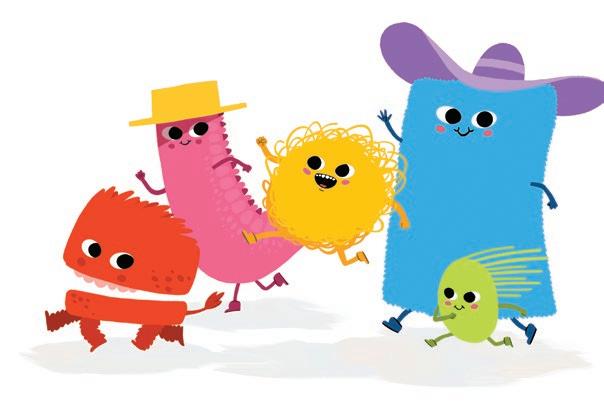
Media. (This Grom-owned US company was, until very recently, run by former Nickelodeon president Russell Hicks, who also served as head of Top Draw Animation, Grom’s Philippines-based studio. Hicks announced in mid-April that he would soon be leaving Top Draw and Curiosity Ink to focus on creating his own IPs.)
Hicks says he’s intrigued by the Philippines as an emerging destination for animated TV and film production because the Film Development Council of the Philippines (FDCP) recently increased its Film Location Incentive Program’s 20% cash rebate to 25%, with a 5% cultural bonus capped at US$540,000. Animated features, TV series and/or VOD content are all eligible.
“It’s an exciting time because it’s another culture that has mostly consumed American, Japanese and European animation. Filipinos haven’t been able to tell the stories they grew up with,” says Hicks. “Plus they have three or four highly accredited animation schools, so there are a lot of kids coming up that want to be creators.”
He also notes that the potential worldwide audience for new Filipino kids & family content is significant—the country has 128 million citizens living within its borders and abroad (roughly one-third the size of the US population), and 35% of them are under the age of 18.
For its part, Top Draw has three new kids shows in development and is on the hunt for pre- and post-production partners. “We’re looking to collaborate with people who want to produce great Filipino content,” says Hicks.
It’s possible that some of Top Draw’s future partners might hail from the Great White North, as Canada is also pushing for more co-pro opportunities. Agnes Augustin, president and CEO of Canadian kids media private equity investor Shaw Rocket Fund, says there’s been a significant jump this year in applications from co-pro series projects to Shaw Rocket’s Content Creation Program, compared to just one in 2022/2023 and four in 2020/2021. “We’re only halfway through our fiscal year, and we’ve already had 10 co-pro applications come in,” she says.
Augustin is also seeing an increase in digital-first co-pro projects. For the latest round of its Kids Digital Animated Series program—a joint initiative with the Canada Media Fund (CMF) that launched in 2019— three have been submitted so far.
“That’s a result of not only the CMF pushing for more international partnerships, but of the broader digital-first shift that’s happening across the industry, too,” she says. “We’re definitely seeing more movement to create those types of global financing partnerships.”

right now
Execs from across the kids industry weigh in on the art, science and math of co-production funding strategies.
BY: SADHANA BHARANIDHARANlthough more and more producers are branching out beyond their own borders for funding, the path to co-financing is still anything but straightforward. Knowing where to start and what to prioritize can be confusing and overwhelming. When multiple territories are involved, there is no one-size-fits-all approach. And, although the funding is out there, the competition is fiercer than ever.
So, what are some things creators need to consider before they strike out to brave the co-pro seas? The difference between smooth sailing and rocking the boat comes down to finding the delicate balance between knowing how to harness the funding resources in different territories, and getting strategic with budgeting and production planning.
Cottonwood Media produces multiple premium live-action shows that typically land in the budget range of US$13 million to US$18 million, so co-production partners are key in getting its projects off the ground, says president/co-founder David Michel. Partners usually bring in 10% to 30% of budget, according to the company.
The Parisian studio’s latest co-pro, Spellbound, secured some of its US$16.7-million pricetag for season one from lead broadcasters ZDF in Germany, France Télévisions and US streamer Hulu. But it also needed a significant minimum guarantee from parentco Federation Studios, funding from the Creative Europe MEDIA program and gap financing that Cottonwood fronted itself.
“These are high budgets for kids TV, [so] they require substantial presales to several broadcasters, a sizable distribution minimum guarantee and production gap financing,” says Michel. He underlines the importance of planning ahead, given the limited number of partners looking for live action at the presale stage.
When it comes to gap financing, LA-based entertainment attorney Elsa Ramo (a founding partner at Ramo Law who has advised companies including Hello Sunshine, Imagine Entertainment and Skydance Media) stresses that producers shouldn’t rely solely on sales in today’s softer marketplace—not only will that trigger a loss if a show underperforms, but it will also serve as a red flag to investors on future projects.
Another task to tackle early on in the budgeting process is ensuring that there’s enough local spend in each territory to trigger incentives, notes Doug Schwalbe, founder of Superprod’s The Co-Production Company in New York. It may be challenging in a more complex partnership, but producers should be savvy about leveraging the criteria.
In the case of a British/French/Australian co-production, for example, “an Australian storyboard artist [might trigger] Australian tax credits but be paid out of a Northern Irish animation studio so that it can still qualify as UK spend under the Australia-UK treaty,” explains Schwalbe.
Distributors can also be very helpful if they board a project early in the development process, since their involvement will often provide reassurance to broadcasters considering a commission or presale. However, distributors typically look for shows that have at least one broadcaster already attached in some way, says media consultant Justine Bannister.
“Having a distributor on board when you’re applying for funding can be a real value-add,” she says. “But even if they can provide a substantial minimum guarantee, distributors rarely help to cash-flow production. These sums are payable down the line, generally upon delivery of the show.”
With all the financial churn, is the industry changing its approach to windowing? Well, maybe…
The Co-Production Company’s Doug Schwalbe says he’s seeing a shift in willingness among buyers to share windows. “Exclusivity is not as important as everyone thought it was,” he says. “Some would argue that it's cumulative—the more times [a show] is exposed to various audiences, the more valuable it becomes.”
About five years ago, streamers had an own-everything-everywhere-forever approach that was not feasible in the long run, says Schwalbe. He points to Netflix’s loss of 200,000 subscribers in Q1 2022 as a likely turning point “when the ‘space race’ on spending came to a halt” and people began rethinking the exclusivity model—because if this doesn’t drive subscriber growth, what will? It has had an effect on today’s market, making it more favorable to co-pros, Schwalbe says, because “window-sharing is the key to financing” for buyers, rather than potentially overpaying in the name of exclusivity.
But WBD’s Adina Pitt cautions that the exclusivity-versus-ubiquity debate is also a little tricky in a kids media context because younger viewers aren’t as attuned to what platform they’re using. “The conundrum is that you want to [provide] that discoverability, but [you] also want to have the brand association with your company,” she explains, highlighting why selectivity is important as window-sharing becomes more common. —SB
Cottonwood Media’s latest co-pro, Spellbound, secured funding from lead broadcasters in Europe and the US, but that wasn’t all it needed to get it off the ground

With competition for kids content funding at an all-time high, here are four new incentives that could help ease the financing load for creators.
The Philippines’ Film Location Incentive Program (FLIP)
Details: Provided by The Film Development Council of the Philippines (FDCP) through its FilmPhilippines Office (FPO), FLIP is a selective cash rebate program for qualified international projects that have conducted production, animation and/or post-production in the Philippines.
Next call for projects: September/October 2024
Rebate value: Selected projects will receive a 20% cash rebate capped at US$450,000 based on their Qualifying Philippine Production Expenditures (QPPE). And those that pass a cultural merit test will receive an additional 5%.
Eligibility: Feature-length films (70 minutes or longer) and short films (40 minutes or shorter); TV and/or VOD content; and web and virtual reality content.
Contact: filmphilippines@fdcp.ph
One of the newer routes many producers are opting to take is going digital-first—for example, testing audience engagement with a more reasonably budgeted online short series before making a bigger content commitment. Many buyers, including Warner Bros. Discovery, have become more open to looking at digital-first IPs in recent years.
Adina Pitt, WBD’s VP of kids & family content acquisitions, partnerships and co-productions in the Americas, says her team routinely tracks kids brands that are generating interest on other platforms.
“Lucas the Spider is one example of something that originated on YouTube, and then we worked with our partners to develop a longform series,” she recalls. “But I do think people have to manage their expectations since there's just so much out there. It has to be the right show at the right time and the right price.”
Against the backdrop of ongoing budget constriction in the industry, co-producers need to have the ability and willingness to make cuts in the right places if financial commitments change, adds Pitt. Sometimes, that might mean trimming down a series into a package of specials that’s still true to the IP’s core identity but at a lower cost.
“I would rather that you retain that beautiful narrative and do less,” she advises. “Don’t compromise the DNA of your IP in favor of money.”
Choosing the right countries in your partner search is a big piece of the co-pro puzzle, because each one represents a different gateway for commissioners and incentives. And there’s no one-size-fits-all scenario that works for every project.
Banijay Kids & Family is behind one of the market’s buzziest co-pros right now—Super Happy Magic Forest, which is currently in production (no release date has been set). It’s an example of an “internal co-pro,” given that it hails from the company’s subsidiaries in France (Zodiak/ Monello), the UK (Tiger Aspect Kids & Family) and Italy (Movimenti).
Hong Kong-Europe-Asian Collaboration Film Production Funding Scheme
Details: Launched in early 2024 by the Hong Kong Film Development Council with promotion from CreateHK, this initiative is designed to encourage more European-Asian partnerships. To be considered, feature film co-productions must fill three key roles (director, producer and screenwriter) with at least one qualified European/Asian film practitioner and at least one qualified Hong Kong film practitioner.
Next call for projects: Q2 2024
Grant value: Successful films are eligible for a grant of up to US$1.1 million.
Eligibility: Feature-length narrative films and animated films. No restrictions on filming locations/languages, but at least 30% of below-the-line expenses must be spent in Hong Kong, and at least six out of 10 major departments (such as cinematography, sound, VFX, costume, etc.) should be headed up by at least one permanent Hong Kong resident.
Contact: info@fdc.gov.hk
All of these studios are located in “key funding territories,” according to Banijay Kids & Family CEO Benoît Di Sabatino—in other words, “countries where demand is strong, where our relations with integral local broadcasters are excellent, and where there are important tax incentives.”
For Magic Forest, this basket of benefits generated enough interest to lock in four commissioning broadcasters (BBC, RAI, ZDF and Canal+) and a presale to ABC. “We could gather broadcasters that [typically don’t] work together, such as RAI and BBC,” says Banijay Kids & Family COO Ludovic Taron, adding that the co-production tapped into local tax credits in every partner’s territory.
Still, Schwalbe cautions against relying solely on the tax break factor when it comes to geographic strategies for co-production deals.
“On service work? Yes, it’s all about regions with the highest tax credit. But for co-pros, you also need to factor in the enhanced license fee from the region’s broadcaster,” he notes.
As an example, a French network will pay more for a local production (qualifying as French or European under co-pro treaty), but broadcasters in regions like Germany don’t necessarily pay more to acquire European productions. To maximize the ROI, Schwalbe advises producers to prioritize securing a German buyer as a commissioner rather than an acquisition.
Based in Milan, Red Monk Studio CEO Pedro Citaristi recently determined that tween series Home Sweet Rome!—about an American girl who moves to Italy—would need a combination of European and North American creative teams. “[Our research] found there’s [an effective] co-pro treaty between Canada and Italy that helps a lot in making an IP qualify for the nationality of both countries,” he says.
Co-producing with Toronto’s First Generation Films allowed Home Sweet Rome! to qualify for Canada’s Shaw Rocket Fund, and filming in Rome unlocked Italy’s generous tax credits. “They were raised from
35% to 40% to sustain Italy’s industry during the pandemic,” Citaristi explains—and they’re still at that same level.
This strategy was not just sound financial planning; it was also about aligning closely with the creative flair of the show, which blended the appeal of “armchair travel” and an American protagonist. That may explain why this Italian-Canadian co-pro generated interest from both sides of the Atlantic—Max (US), RAI (Italy), Family Channel (Canada), BBC (UK) and ARD (Germany) have all commissioned the series.
It’s also never too early to think about potential L&M partners. Although it can be hard to quantify in a finance plan, Ramo says this is a unique value proposition in kids & family content financing, where there’s immense opportunity for a partner to take the lead on leveraging the IP into consumer products and other ancillary revenue streams. And locking in a major licensing partner is sometimes a factor when it comes to attracting more financing.
“An investor who sees that the money will come back from one linear sale may be more compelled to invest if they see that the show could be the next Peppa Pig,” says Ramo.
Ultimately, having international partners can come with some roadblocks that are creative or even administrative in nature.
Bannister suggests that producers look into non-treaty co-pros for a budget that may require too many boxes to check through a traditional co-pro route. To get set up, they need to research buyer profiles and learn where they offer support. “When commissioning new projects, some broadcasters—like France Télévisions, for example—provide money for development. But not enough of them do this.”
When key players hail from different continents, there’s a higher likelihood of an editorial clash of cultural differences. That’s why Taron strongly urges producers to finalize an agreement on the artistic direction of the show early on, with a streamlined vision on which everyone can agree.
Details: The Council of Europe, home to cultural support fund Eurimages, initiated this three-year pilot program for series co-productions in 2023. It’s designed to provide late-stage financing—with a top-up grant of either €250,000 or €500,000— to series co-productions between producers in the Eurimages member states and producers in 15 other participating countries*. Projects should demonstrate strong collaboration with broadcasters or streaming platforms.
Next call for projects: Spring 2025
Funding available for 2025: TBD (2024 total budget: €3.5 million)
Eligibility: Drama, documentary and animated series. Each season entry should have a maximum of 10 episodes and should not exceed 600 minutes (or 700 minutes for animation, with no episode limitation).
Contact: pilot.series@coe.int
* Belgium, Croatia, Estonia, Greece, Hungary, Ireland, Lithuania, Luxembourg, Netherlands, North Macedonia, Portugal, Serbia, Slovak Republic, Slovenia, Spain
India’s Incentive
Details: This Government of India program (run by the Ministry of Information and Broadcasting) seeks to attract more foreign talent for collaborations and position India as a creative hub. Though the incentive originally rolled out in May 2022, the government revised and relaunched it in December 2023. Projects must be approved as official co-productions by competent authorities in participating countries. And the international partner must hail from one of 16 countries India has a co-pro treaty with.
Next call for projects: Year round (no application window)
Reimbursement value: Up to 30% of Qualifying Production Expenditure (QPE) incurred in India—ranging from a minimum of US$135,000 to a maximum of roughly US$3.6 million. Live-action projects may be eligible for an additional 5% rebate if they employ at least 15% Indian labor.
Eligibility: Animated and live-action feature films (minimum length of 72 minutes), series (each episode no less than one broadcast half hour) and documentaries (minimum 30 minutes).
Contact: ffo@nfdcindia.com
All eyes are on next month’s Annecy International Animation Festival, which attracted a record-breaking 16,000 attendees in 2023. The annual event will shine a spotlight on Portugal this year, as well as introducing a new Official Selections category to showcase films for children. But there are also plenty of new kids TV concepts heading to the lake, and we’ve rounded up several that you should watch out for.

Producer: Revelator Studio (Ireland)
Style: CG animation
Format: 52 x three minutes
Budget: US$35,000 per episode
Status: A bible, five scripts and two animatics are done, and a pilot is currently in production. The team is reaching out to broadcasters, distributors and potential co-producers.
Delivery: 24 months after greenlight
Surveying more than 100 parents of preschoolers, Revelator identified a strong appetite for shows that provide “fun without frenzy.” And that led writers Wayne Thornley (Zambezia) and Andrew Phillips (Monster Beach) to co-create this concept about a cautious, cube-shaped bear named Boxford and a round, wild-spirited fox named Bounce. They couldn’t be more different. When Bounce tries to teach Boxford how to roll around, the bear can’t pull it off with all his sharp angles. So together, they come up with a move they can both enjoy—cartwheels! For the pilot, Revelator consulted with child/educational psychologists to get the balance between a calmer pace and entertainment value right for under-fives.

Co-producers: Hype Animation (Brazil), Rockhead Studios (Brazil)
Style: CG animation
Format: 52 x 11 minutes
Budget: US$85,000 per episode
Status: A bible, pilot and several animatics are available, and the studios are seeking presales and equity investment partners for both the series and the video game portfolio.
Delivery: Q4 2026
6 to 9
Based on four Starlit Adventures games that have collectively racked up more than 30 million downloads since 2015, this concept follows a boy named Bo and his BFF Kikki (a “Starlit” with a glowing star on her nose), who inhabit one of the floating islands on a planet guarded by children. When other islands float by, the pair embark on adventures and overcome obstacles—using magical get-ups like the Snow Suit and Fire Suit—to help their neighbors, make new friends and unravel hidden mysteries. Hype and Rockhead previously launched a series of 30-second animated videos featuring Bo and Kikki on YouTube in December 2022, and a new PC/mobile game title called Starlit Adventures 2 is currently in production.
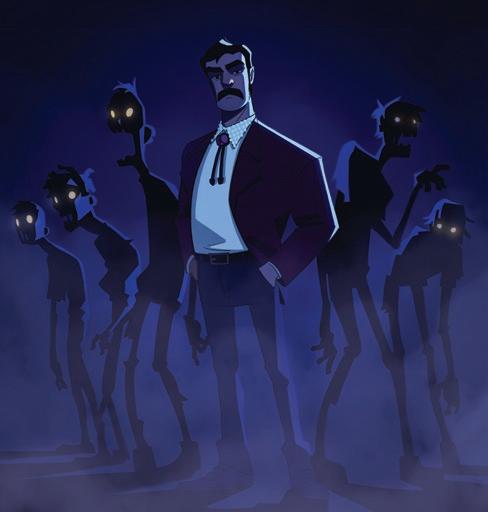
Co-producers: Wild Child Animation (UK), Bigmouth Audio (UK)
Style: 2D animation
Format: 52 x 11 minutes
Budget: US$6 million to US$7 million
Status: A bible with a few storylines, a pilot script and key character designs are available for broadcasters and distributors who would like to see more.
Delivery: Q3/Q4 2026
In this sci-fi adventure series set in the mid-’90s, Samantha and Jamie are dealing with typical tween problems…until all the zombies start showing up, that is. Avoiding brain-eaters, suspicious government agents and a hapless police chief, the BFFs must get to the root of this undead uprising. They discover that a tech billionaire who’s mining goo from an alien spaceship is responsible, and he’ll stop at nothing to make sure the kids don’t interfere with his lucrative harvest. Zombieville is based on a same-name podcast for eight- to 12-year-olds that’s produced by Bigmouth Audio. With four seasons in the can, it premiered on BBC Sounds in 2017 and won a 2018 British Podcast Award in the family category.
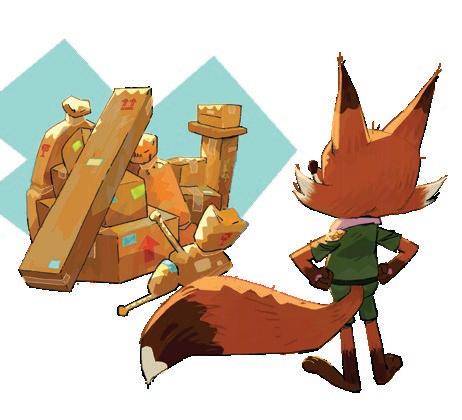
Co-producers: Available Light Productions (US), Copper Cup Entertainment (US)
Style: CG animation
Format: 11-minute episodes (volume TBD)
Budget: US$300,000 to US$350,000 per episode
Status: A bible and sample storylines are available. The partners are looking for financing to do more visual and script development, and they would also like to lock in an animation studio partner.
Delivery: 18 to 24 months after greenlight
Former Disney Junior/Netflix preschool content guru Nancy Kanter is aiming to deliver something special with her latest series project. Amy Higgins (Star vs. the Forces of Evil, Wander Over Yonder) created this buddy comedy about a young fox who has to overcome some pretty big obstacles to keep packages coming to Brightwater Village’s animal residents. A typical episode might see Alexander and his sidekick Bolton the mail truck navigating snow-filled streets during a big storm or getting caught in a traffic jam caused by a crowd of concert-goers. There’s some big star power lined up for this series, including producer Kevin Jonas (musician/actor and member of The Jonas Brothers, who also owns Copper Cup Entertainment) and story editor Brian Clark (Molly of Denali).
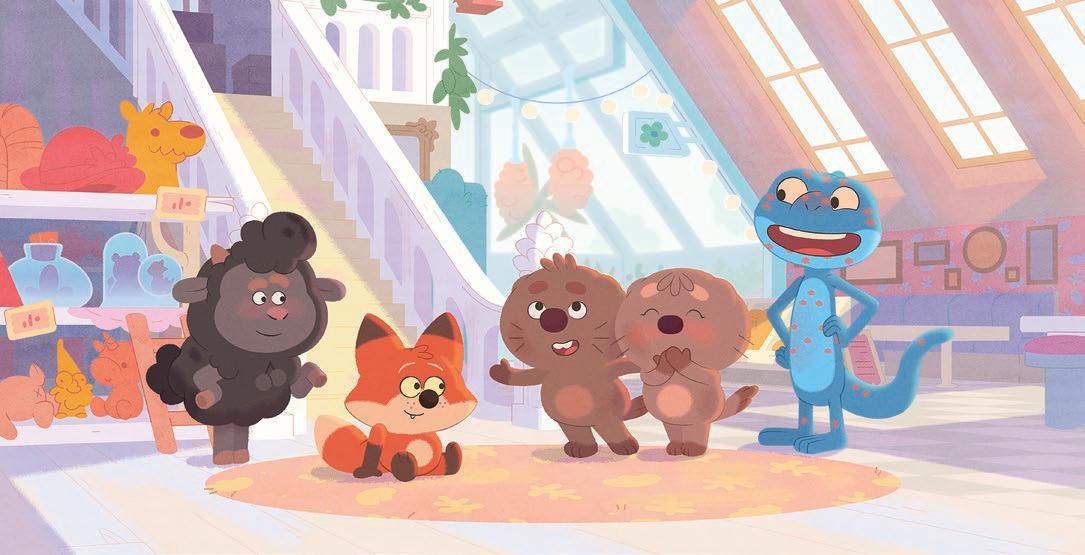
Producer: Happy Camper Media (Canada)
Style: 2D animation
Format: 39 x seven minutes
Budget: US$4 million
Status: A bible, scripts, an animatic and a theme song are done. Next up are commissioning partners and presales.
Delivery: Q2/Q3 2026
Developing a sense of self is a challenge for every kid—but it’s particularly tricky for twins. Identical woodchuck siblings Flora and Remy are all about exploring the fun aspects of twinhood, while also learning how to own their individuality. In one ep, both sisters accidentally wear the same pineapple costume to a party. All the fun hangs in the balance of this social disaster until Remy takes off her headpiece to look more like a lemon. Happy Camper has plans to embrace these identity-building play patterns as it moves the IP into licensing, and wooden toys seem like a natural fit. Shaw Rocket Fund and the Canada Media Fund are supporting the production of three first eps, plus additional short-form content.

Producer: Cyber Group Studios (France)
Style: 2D animation
Format: 26 x 22 minutes
Budget: Between US$9 million and US$9.5 million
Status: A bible, scripts and a teaser are available. The project is in very early development, and Cyber Group is looking for broadcasters and co-producers.
Delivery: 2027
Preschool
6 to 10
In a world where unicorns are hunted for magic, 14-year-old Aëlig must evade enemies and search for clues to find the legendary Unicorn Sanctuary—where the last unicorn, Kalyane, can finally be safe. Adapted from a 10-book series called Le maître des licornes by writer Éric Sanvoisin and illustrator Federica Frenna (published by Auzou), Master of the Unicorns represents the first semi-serialized narrative that Cyber Group has tackled. And the French studio is bringing more value to the project by setting up Ghislaine Pujol (Jade Armor) as head writer and Jean-Luc François (Arthur and the Children of the Round Table) as director.
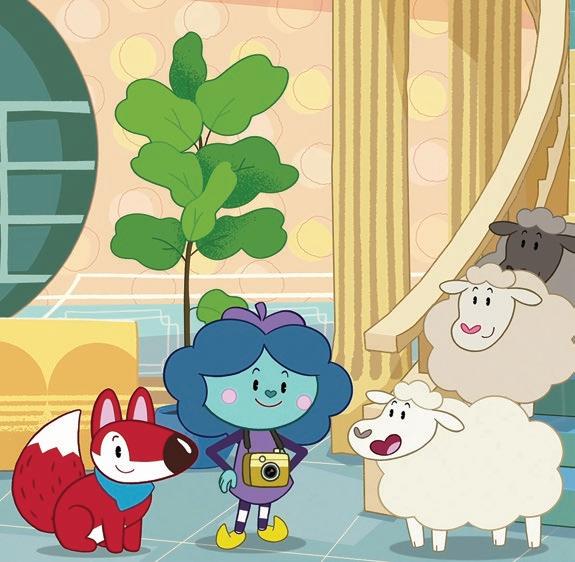
Co-producers: ALT Animation (Northern Ireland), Global Mechanic (Canada)
Style: 2D animation
Format: 52 x seven minutes
Budget: US$4.1 million
Status: A trailer, a bible and eight scripts are ready to share with distributors and broadcasters.
Delivery: 19 to 22 months after greenlight
Check in to ALT Animation and Global Mechanic’s The Polka Dot Hotel, where guests can always count on getting a helping hand. In each episode, someone new arrives with a quirky issue for young Bobbi and her pet fox to tackle—from helping a singing whale overcome stage fright, to finding a circus clown’s rubber nose. And when Bobbi’s stumped, she can always count on the hotel’s fussy manager and chef to step in with solutions. ALT development producer Matthew Bradley created this series concept, and it’s the first time he’s worked in preschool. But he has experience producing Captain Onion’s Buoyant Academy for Wayward Youth, which was greenlit last year through the BBC Children’s Ignite program.


ookie Monster wasn’t always an adorable blue puppet obsessed with chocolate chips and snickerdoodles. He started out as a scary-looking monster with frightening teeth, first seen publicly in a 1967 IBM ad in which Cookie eats something else starting with “c”—a computer. Jim Henson’s creation then appeared in a sketch on The Ed Sullivan Show in which he ruins a girl’s beautiful day (because of this, he was known as the “Beautiful Day Monster” for a time).
The team had to reinterpret his look to make the character work for kids TV a few years later. Cookie’s sharp teeth were the first thing to go, and he also got some fresh fur for his move to Sesame Street
“Without his teeth, he has a much cuter and friendlier look,” says Louis Henry Mitchell, Sesame Workshop’s 30-year creative director of character design. “Originally, his fur was a bit greener, but blue was a color that seemed to suit his demeanor.”
Cookies were the hook to add some humor and make him relatable to children (notable cookie monsters in their own right). But, much like his outward appearance, Cookie’s appetite has also evolved over time to embrace healthier foods and personal development. (Next up for him is an appearance in Sesame Workshop’s “Love, Your Mind” campaign—featuring a PSA and printable resources in which the Muppets share techniques for helping kids regulate their emotions. The campaign rolls out in May to coincide with Mental Health Awareness Month.)
Cookie’s lasting appeal comes from his ability to both teach and delight kids—the same ingredients that made Sesame Street’s other Muppet residents so popular when they first hit screens, says Mitchell. “[Kids] were just having so much fun watching their favorite characters”...and the learning was baked in.—Ryan Tuchow
Cookie’s real name is Sidney, or Sid.
“Did you know me name is Sid?” he tweeted in 2022. “But me still like to be called Cookie Monster.”

